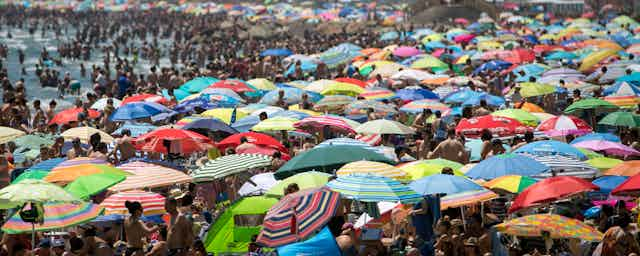

Anti-tourism attacks in Spain: who is behind them and what do they want?
Senior Lecturer in Spanish, Manchester Metropolitan University
Disclosure statement
Karl McLaughlin does not work for, consult, own shares in or receive funding from any company or organisation that would benefit from this article, and has disclosed no relevant affiliations beyond their academic appointment.
Manchester Metropolitan University provides funding as a member of The Conversation UK.
View all partners
Already plagued by long security queues at airports, holidaymakers visiting top destinations in Spain face more vacation woes once they arrive. Anti-tourism activists have been targeting Barcelona, Majorca, Valencia and San Sebastián with protests – some of them involving violence. The goal seems to be to rail against the negative impact of mass tourism on local life and living standards.
In Barcelona, which welcomes some 32m visitors annually, a sightseeing bus was attacked at the end of July as it arrived at FC Barcelona’s iconic Camp Nou stadium. Masked assailants slashed the tyres and daubed graffiti on the sides of the bus.
They sprayed the message (in Catalan) “tourism kills neighbourhoods” in orange paint on the windscreen. Passengers, including several Britons , said they initially thought they were under attack from terrorists. Elsewhere in the city, bicycles rented out to tourists have been vandalised and rendered unusable.
Days earlier, a group of around 20 anti-tourism activists brandishing flares and placards burst into the popular Mar de Nudos restaurant in Palma, the capital of holiday island Majorca. They showered the mainly foreign customers with confetti, before staging a smoke-filled protest next to luxury yachts moored in the marina.
In a video posted later on social media, the campaigners urged others to join them in bringing chaos to bear on the “mass tourism that is destroying Majorca and condemns the working classes to a life of misery”. Following the incident, graffiti has appeared speaking out against tourist apartments and the “invasion” by café terraces on Palma’s popular Calle Blanquerna.
In Valencia, protesters occupied a rental apartment used for city breaks and unfurled a banner on the balcony decrying the tourism-driven gentrification of the area and demanding that housing be used to meet the needs of locals.
Previously, an estimated 100 locals dressed up as tourists and paraded through the streets, satirising visitor behaviour (including urinating against walls) as a protest against “ touristification ”.
Meanwhile, in San Sebastián, where a population of 180,000 greeted two million tourists in 2016, “tourists go home” slogans by pro-Basque, left-wing groups have appeared on city walls. There are fears that the actions will escalate further, with a street demonstration planned for the height of the mid-August Semana Grande fiestas. The prospect of trouble is, unsurprisingly, a major worry for the city and the Basque Country generally, which have enjoyed an impressive upturn in tourism since separatist group ETA ended its campaign of violence in 2011.
Unsustainable numbers?
Tourism industry leaders are at pains to stress that the protests should be taken with a pinch of salt. They claim the attacks are clearly part of the pro-independence agendas of a small number of radical and anarchist movements. That’s why the incidents have been concentrated in Catalonia, the Basque Country and the Balearic Islands.
However, the high profile actions are sparking fresh debate on the Spanish tourism model and its arguably unsustainable visitor numbers. This is particularly pressing in a year designated International Year of Sustainable Tourism for Development by the UN.
Spain is the world’s third most visited country. Last year, it posted a new record of 75m tourists, nearly 17m of them British. According to the World Travel and Tourism Council , the total contribution of travel and tourism to Spain’s economy in 2016 was €158.9 billion, or 14.2% of GDP. That figure is expected to rise by nearly 4% by the end of 2017. The sector accounts for an estimated 2.7m direct and indirect jobs in the country.
However, the picture isn’t entirely positive. Luxury hotels have been built in Lanzarote, for example, without planning permission . They did come with juicy backhanders for mayors, though. In Santa Cruz de Tenerife, developers bought up cheap tracts of land on the eve of the announcement of a major beach development after colluding with local officials. The land was promptly sold off to the council for the flagship regeneration project at a massively inflated price. Culprits on both sides of that particular scandal were sentenced to a total of 33 years in prison .
Fertile ground
Fuelled in part by the understandably angry reaction to such corruption, there is little doubt that the message of anti mass-tourism campaigners is falling on fertile ground, despite widespread criticism of their aggressive methods. There is increasing sympathy for local residents and businesses who are being squeezed out of destinations by spiralling rents and property prices, not to mention for the young people denied a decent and stable living due to tourism’s low-wage and long-hour employment.
Far from being simply another headline-grabbing fad cooked up by anti-establishment groups, the incidents may speak to a much wider and more receptive audience. A survey commissioned by Barcelona council found that locals consider tourism to be the city’s second most pressing problem , after unemployment. It is a view shared by Barcelona’s leftist mayor, Ana Colau, who was criticised last week for not denouncing the sightseeing bus attack immediately.
A year before taking up office, Colau took to the UK media to bemoan the evils of a tourism-saturated city and reveal her fears that Barcelona could become the next Venice. Even if not enjoying the same explicit political support elsewhere, the anti-tourism mobilisations of recent weeks may have touched a nerve and could spread to other parts of the country.

Senior Enrolment Advisor

Associate Professor, Occupational Therapy

GRAINS RESEARCH AND DEVELOPMENT CORPORATION CHAIRPERSON

Faculty of Law - Academic Appointment Opportunities

Audience Development Coordinator (fixed-term maternity cover)
- International edition
- Australia edition
- Europe edition
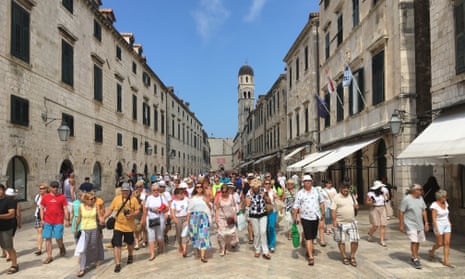
First Venice and Barcelona: now anti-tourism marches spread across Europe
Demos in San Sebastián and crackdowns in Rome and Dubrovnik as locals vent frustration at city-breakers and cruise ships
With the continent sweltering under a heatwave nicknamed Lucifer, tempers have been boiling over, too, as a wave of anti-tourism protests take place in some of Europe’s most popular destinations. Yet, as “tourism-phobia” becomes a feature of the summer, the World Tourism Organisation (UNWTO) has defended the sector, calling on local authorities to do more to manage growth in a sustainable manner.
The focal point for much of this has been Spain , which had a record 75.6 million tourists last year, including 17.8 million from the UK. In Barcelona , where tensions have been rising for years over the unchecked surge in visitors and impact of sites such as Airbnb on the local housing market , Arran, the youth wing of the radical CUP (Popular Unity Candidacy), have been filmed slashing the tyres of rental bicycles and a tour bus . An Arran spokesperson told the BBC: “Today’s model of tourism expels people from their neighbourhoods and harms the environment.” Spanish prime minister Mariano Rajoy described the group as “extremists”.
There have also been protests in Mallorca and San Sebastián , where an anti-tourism march is planned for 17 August, to coincide with Semana Grande – a major festival of Basque culture.
Other demonstrations have taken place across southern Europe. Last month in Venice – which sees more than 20 million visitors a year and has just 55,000 residents – 2,000 locals marched through the city, voicing anger at rising rents and the impact of huge cruise ships and the pollution they cause to the city’s delicate environment.

Speaking to the Guardian, UNWTO secretary general Taleb Rifai said the rise in anti-tourist sentiment is “a very serious situation that needs to be addressed in a serious way”. If managed correctly, he added, tourism can be the “best ally” to conservation, preservation and the community.
“It should not be given up for the sake of mismanagement,” he said. “Ensuring that tourism is an enriching experience for visitors and hosts alike demands strong, sustainable tourism policies, practices and the engagement of national as well as local governments and administrations, private sector companies, local communities and tourists themselves.”
UNWTO recommends a number of proven methods for managing crowds in destinations, such as encouraging tourists to visit beyond the central sights, diversifying tourist activities, reducing seasonality and, importantly, addressing the needs of the local community. The focus should not be, it says, on simply stopping tourists arriving.
Earlier this year, Barcelona started cracking down on unlicensed Airbnb rentals , doubling the numbers of inspectors checking properties. Of around 16,000 holiday rentals in the city, 7,000 are believed to be unlicensed.
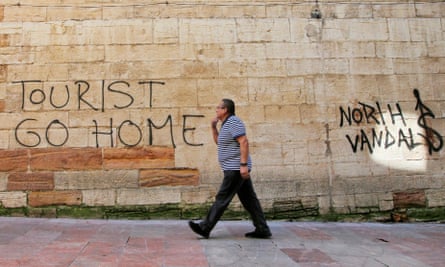
In Venice, the mayor’s office has also been attempting to tackle the problem. In June it said it would introduce a ban on new tourist accommodation in the city centre, and “people counters” have been installed at popular sites to monitor overcrowding.
Italy has also been cracking down on anti-social behaviour in other tourist hotspots. In Rome, this means a ban on people eating or paddling in the city’s fountains and drinking on the street at night . Similar measures have been put into place in Milan – which introduced a summer ban on everything from food trucks to selfie sticks in the Darsena neighbourhood.
In Dubrovnik, another city where cruise ships unload thousands of visitors at a time, the mayor has introduced cameras to monitor the number of visitors in its Unesco-listed old town, so that the flow of people entering can be slowed – or even stopped – once a certain number is reached. Meanwhile, the mayor ofpopular Croatian party island Hvar has pledged to put an end to debauchery by mostly British tourists by slapping them with huge fines .
For Duncan McCann, researcher at the New Economics Foundation, there are a number of factors underlying the recent tensions, including the rise of Airbnb, an increasing number of tourists making short city breaks , and the burden of cruise ships. Both city breakers and cruise ship passengers are far more likely to remain in a city centre rather than explore further afield.
The perceived threat of terrorism in north Africa has also led to an increase in tourists holidaying in the Mediterranean over the past two years.
“These shifts are really putting pressure on these locations, increasing the numbers and reducing the spread of the tourists,” says McCann. “Once you factor in the layout of a lot of these continental cities – old, and with a network of smaller streets – people start to get the sense that they’re being taken over.”
He adds that this plays into the wider politics of the continent, with economies not seen to be working for people, and politics not addressing the problems.
“Though tourist numbers have increased, I am not sure they have increased enough in five years to cause this much agitation,” he says. “What has really changed? A lot is that politics isn’t out for the ordinary person any more. Until that is addressed I don’t think we’ll see this protest movement subside.”
- City breaks
- On the radar
- Barcelona holidays
- San Sebastián holidays
- Rome holidays
- Dubrovnik holidays
- Europe holidays

‘A good cruise is one that doesn’t come’: Europe’s ports bear brunt of ship pollution

The Loathe Boat: the honking cruise ships ‘ruining’ Istanbul’s port

Amsterdam to close cruise ship terminal amid effort to restrict tourism

Cruises, crowds and fragile ecosystems: the delicate dance of Antarctic tourism

Cruise passengers shuttled into Venice by motor boat to dodge big ships ban

Unfinished and unwanted 9,000-passenger cruise ship to be scrapped

US cruise ships using Canada as a ‘toilet bowl’ for polluted waste

Sinking feeling: cruise ships chart return to Australia amid emissions concerns

Around the world in 245 days – at just £67k for cruise of a lifetime
Comments (…), most viewed.
- Entrepreneurs
- Moving to Spain
- Coronavirus

'Tourist, go home': Why Spain has a movement against mass tourism
Why are some people rejecting tourism, even when it is such an important source of income? The answer lies in the problems related to the massive arrival of visitors in some cities and neighbourhoods.
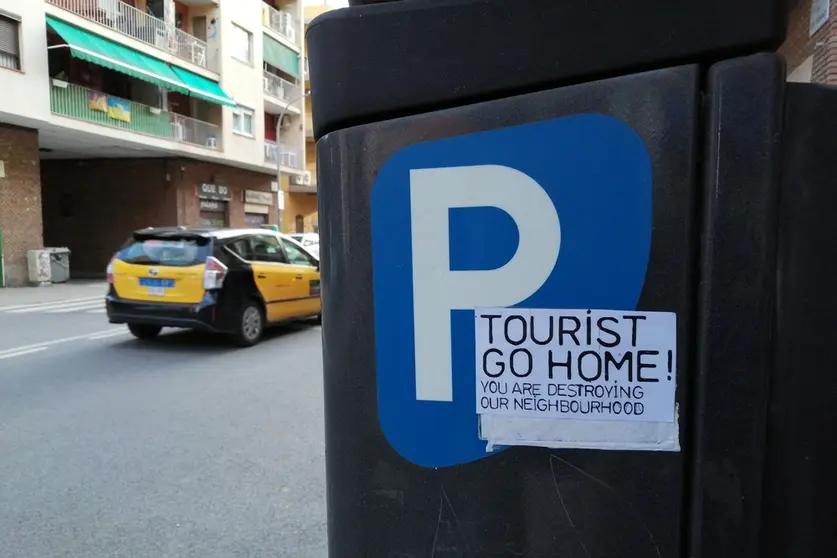
Almost all restrictions derived from the Covid-19 pandemic have been lifted and Spain is preparing to receive millions of visitors again. In March, the number of arrivals increased eightfold compared to the same period last year, an indicator that anticipates a very busy summer , if the war does not cause more damage to the travel sector.
But with the return of mass tourism, a phenomenon that pits locals against tourists, and even locals against each other, is also being reactivated in some overcrowded destinations : the movement that rejects mass tourism.
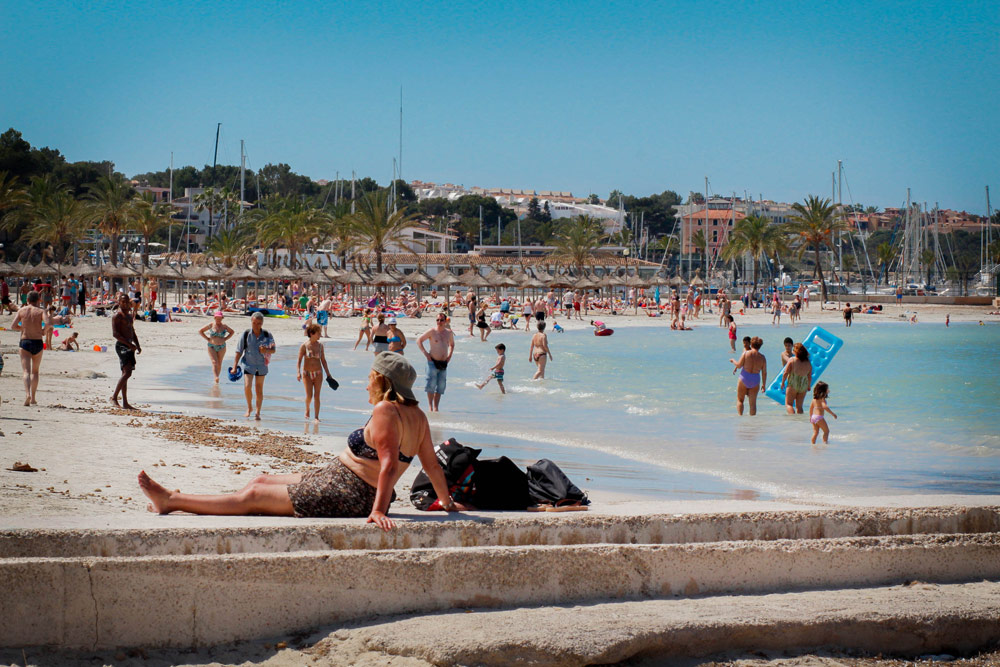
Why are some people rejecting tourism, even when it is such an important source of income for the Spanish economy? The answer lies in the problems related to the massive arrival of visitors in some cities and neighbourhoods.
One of the most important problems is the sharp increase in the rental price of housing . As a result of the advent of very profitable holiday rental flats, permanent residents have to struggle to find a suitable flat at an affordable price. The Rental Housing Price Index (RHPI) shows how prices have risen across Spain since 2015.
If the RHPI value in 2015 was 100, five years later it is between 105 and 113 in every region. And the most affected areas are some of the main tourist destinations: the Balearic Islands , Catalonia , the Valencian Community and Madrid .
Fights, balconing
But the problems do not only have to do with rents. Sometimes the locals also have to put up with the bad behavior of some tourists, related to excessive alcohol consumption, which leads them to do things that they would not do in their places of origin. Residents of tourist areas protest every summer against excessive noise at night , fights in the streets or illegal gatherings of people drinking outdoors, among other issues.
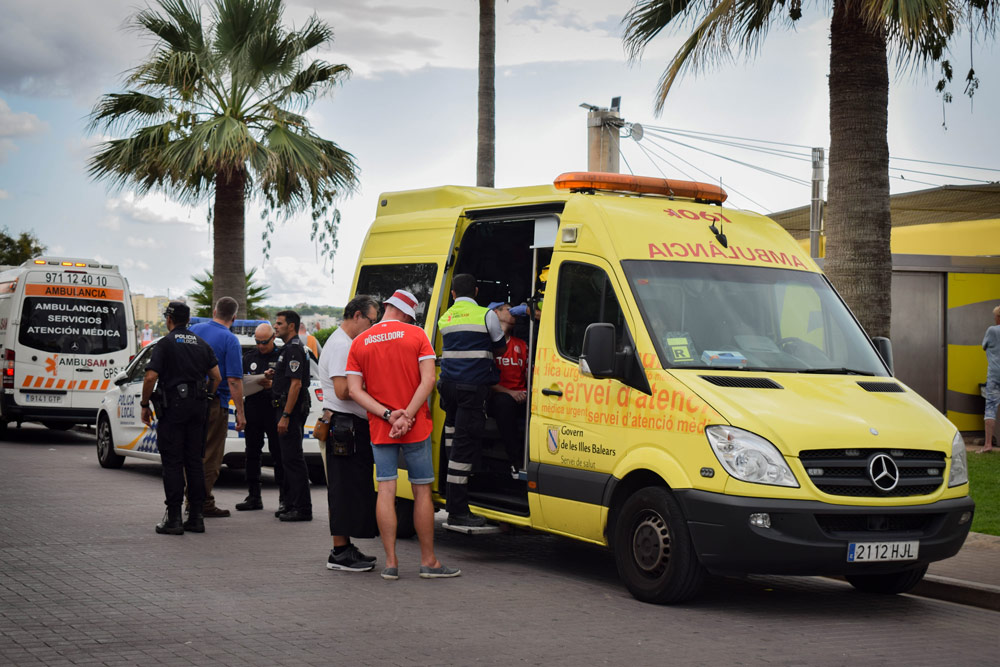
Another problem is that every summer there are deadly consequences linked to excessive drinking. 'Balconing' is the word created in Spain to refer to accidents when tourists jump from hotel balconies. It can happen when trying to get from one room to another, jumping into the pool from an upper floor of the hotel , or just because some people are so drunk that they accidentally fall.
The CO₂ footprint
Another issue related to tourism is the ecological footprint. The Mallorcan association Terraferida stated that between 1993 and 2018 the planes going to and from Palma airport emitted 93 million tons of CO₂. But there are other sources of criticism.
The airports of Spain have received almost every year - excluding the years of the Covid-19 restrictions - a growing number of passengers. In 2019, 275 million travelers were recorded , according to data from Aena, the Spanish operator that manages national airports. These are 87 million more passengers than just 10 years before.
The greater the number of passengers, the greater the space needed for the planes. At some point, some airports are considering the need to expand their facilities. This was the case of the Barcelona El Prat airport, but massive protests stopped the project.
The Zeroport platform criticized that the expansion would have affected the green area of the Delta del Llobregat , right next to the runway. In addition, they considered this plan as a mere "speculative operation" to improve financial results.
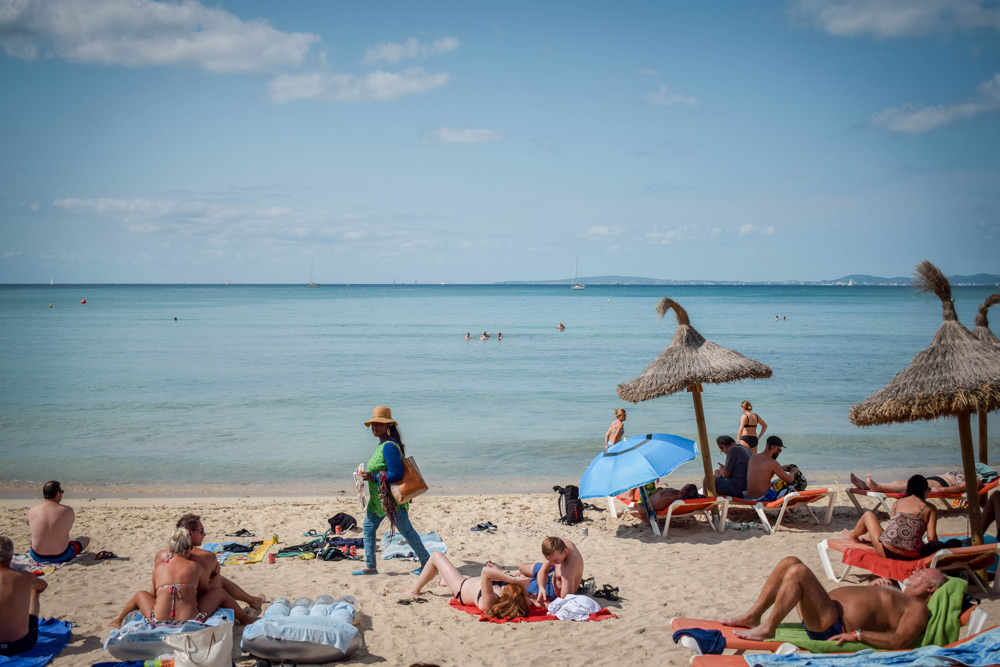
The cruises
Cruise ships are also not viewed positively by some people, as they bring a large number of visitors to the same place in a short time and cause environmental problems. A study by Terraferida reveals that 77,000 tons of oil are burned in the port of Palma over 15 months.
Some governments have already started to adjust the capacities of their ports. The Balearic Islands have just announced that they are going to limit the number of cruise ships in the port of Palma to three per day , becoming the second destination in the Mediterranean Sea to cap the arrival of this type of ship. The first port to do so was Dubrovnik, Croatia.
If some people in tourist areas are fed up with the overcrowding of visitors, what is the solution? There have been many discussions about diversifying the economy , but no big changes are happening yet. Meanwhile, the controversy is served one more year.
*Pablo Morilla is a journalist, author of the blog Michan en Finlandia
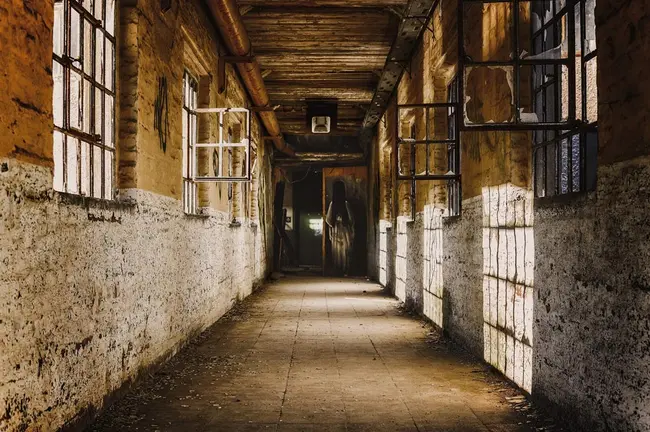
Spain's mass tourism in candidates' crosshairs in election year
- Medium Text
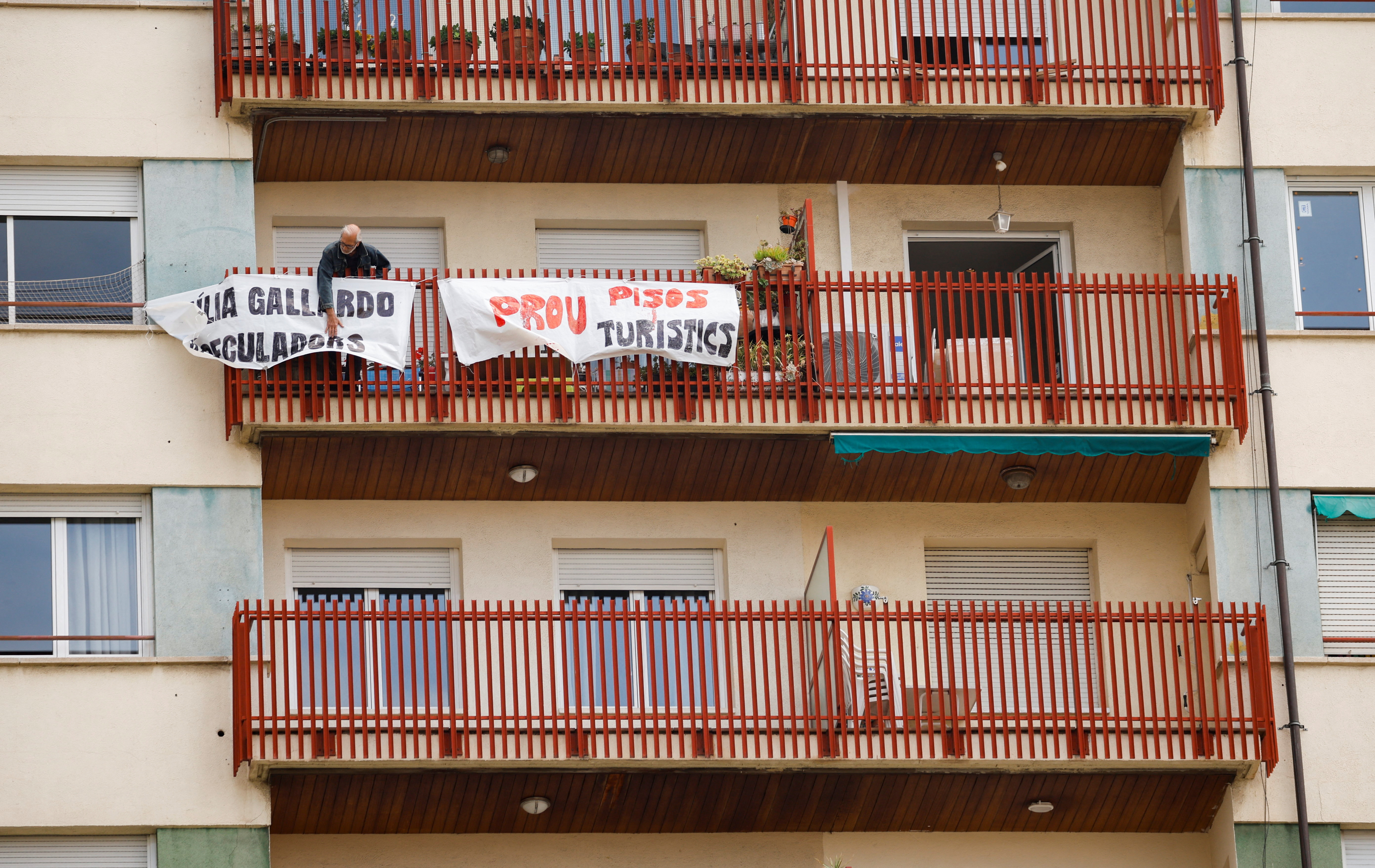
- Spain was second most-visited country in 2019
- Tourism accounts for 12% of economy
- Local and regional elections scheduled on Sunday
- 30 million people visited Barcelona in 2019
QUALITY OVER QUANTITY
The Reuters Daily Briefing newsletter provides all the news you need to start your day. Sign up here.
Reporting by Joan Faus, editing by Aislinn Laing and Alexandra Hudson
Our Standards: The Thomson Reuters Trust Principles. New Tab , opens new tab

Thomson Reuters
Joan is a Barcelona-based correspondent reporting on politics, economics and social issues, such as migration and the car industry’s green transition, and also conducting investigative pieces. With over 15 years of experience, Joan previously worked as Washington correspondent for Spain’s leading newspaper EL PAÍS, closely covering the Obama and Trump administrations, electoral campaigns and major news; at Spanish newspapers Ara and Público in Madrid, and at EFE news agency in Buenos Aires and Barcelona. He is a journalism graduate from Barcelona’s Autonomous University, including an exchange program in Amsterdam and New York, and holds a business executive degree from IESE Business School

World Chevron

Israel will defend itself, Netanyahu says, as West calls for restraint
Israel will make its own decisions about how to defend itself, Prime Minister Benjamin Netanyahu said on Wednesday, as Western countries pleaded for restraint in responding to a volley of attacks from Iran.
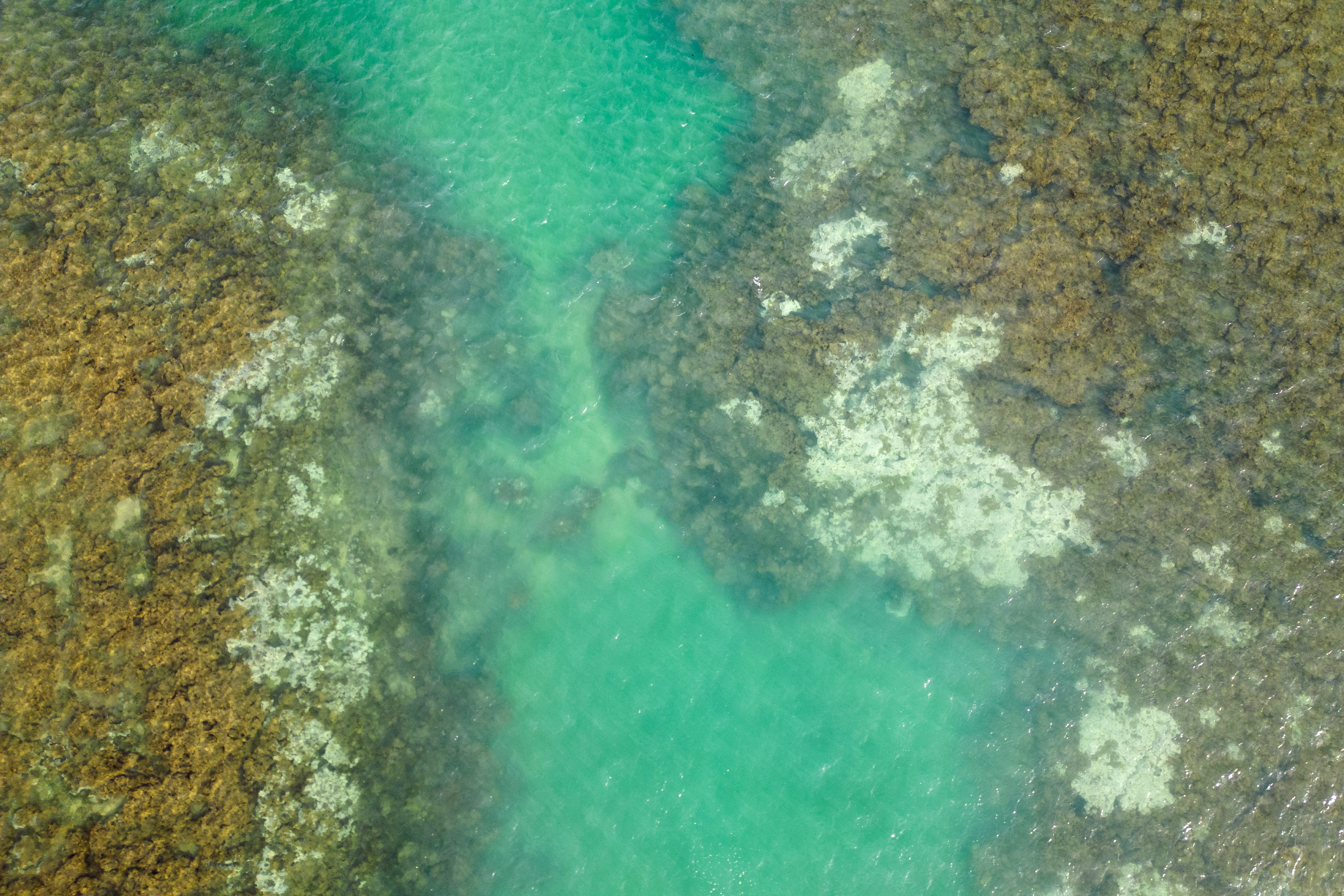
Tourists Go Home! Anti-Tourism as a Social Movement
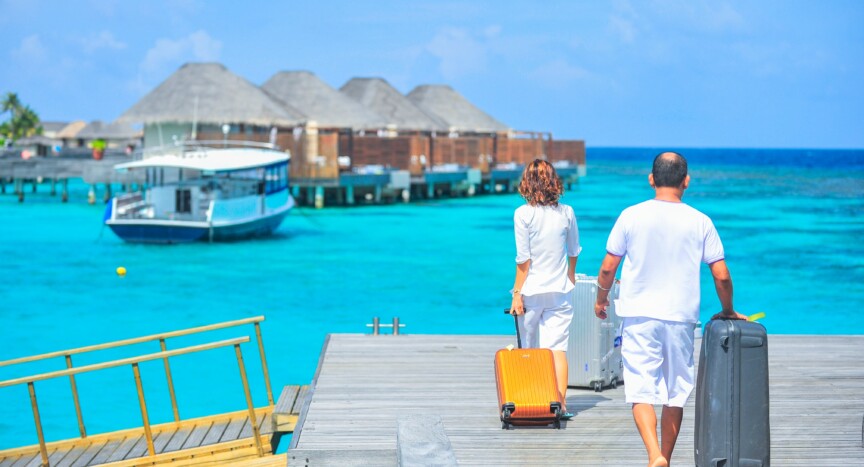
The gradual increase of the tourism industry over the last two decades (see figure 1) has come paired with the surfacing of anti-tourism attitudes. After the Covid-19 pandemic, these attitudes have flourished once more as local institutions and residents reconceptualize how to move forward after a period of reduced tourist travel.

Institutional actors have recently taken the lead in discouraging tourism. For example, the Amsterdam city council in the Netherlands launched the ‘Stay Away’ ad campaign, targeting young, British men who wish to visit the city to enjoy its famous nightlife, permitted cannabis use and red light district. The ads show up online when tourists search for terms such as ‘stag party Amsterdam’ and warn them of the fines for breaking the law [2]. Another way local institutions, such as the one in Venice, have attempted to curb overtourism is by charging entry fees for non-residents to popular tourist destinations [3].
Although institutions are important actors in discouraging tourism, action against tourism and the wider tourism industry is also taken by inhabitants of popular tourist destinations. Where traditionally, tourism studies have focused on the economic costs and benefits of tourism, a growing body of research is concerned with the social costs and benefits of tourism for local residents [4]. Nevertheless, research on the sustained collective efforts of local residents against tourism is lacking [5] and tourism studies would benefit from conceptualizing Anti-Tourism as a social movement.
Anti-Tourism as a social movement
Such instances of anti-tourist action cannot be classified as a social movement; collective action needs to adhere to certain characteristics. The definition of what makes a social movement differs slightly amongst scholars. Diani (1992) defines a social movement as “networks of informal interactions between a plurality of individuals, groups and/or organizations, engaged in political or cultural conflicts, on the basis of shared collective identities.”[5] Also often included in the employed definition is a conflictuous orientation to an opponent and reliance on a repertoire of collective action[7].
The Anti-Tourism movement relies on a strong collective identity amongst those who choose to take action. This collective identity consists of the culture shared between local residents and their shared grievances caused by the tourism industry. Shared experiences of public disturbances by tourists [2] ] , rising costs of living due to neighborhood takeovers of temporary rentals like Airbnb [8] and the loss or commodification of culture [9] are all used in the construction of an ‘us versus them’ narrative. This narrative pits local residents against both the tourists and the cooperations profiting off of the tourism industry.
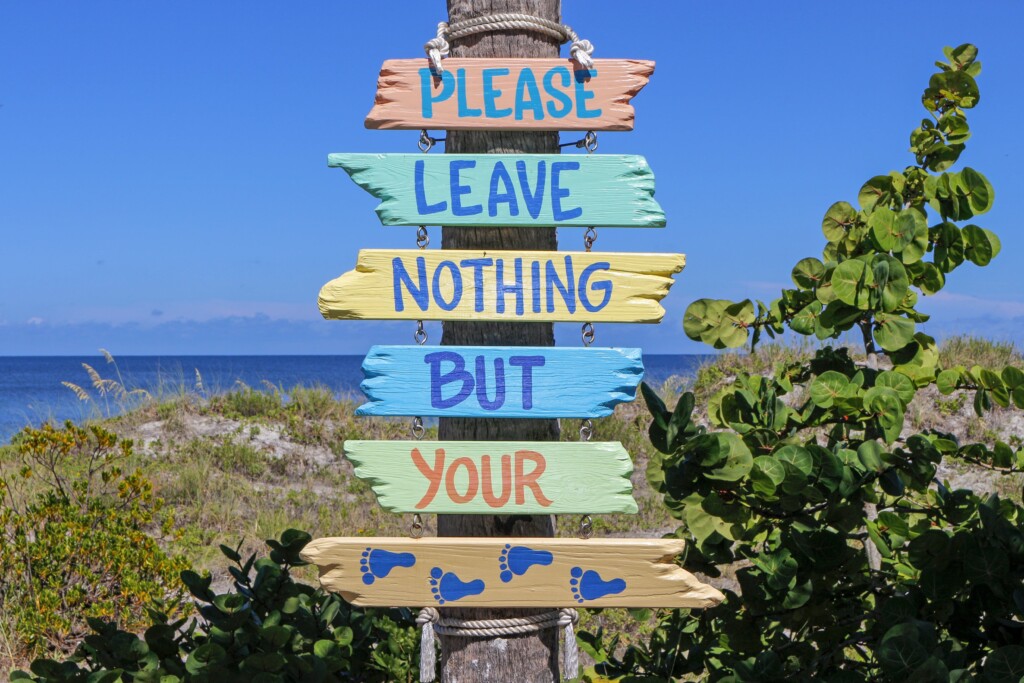
Local residents are not the only actors engaged in the conflict. The Anti-Tourism movement mobilizes already existing activistic social structures. An example of this is the violent anti-tourist protests that swept through Barcelona, Spain in 2017, that were linked to left-wing nationalist activists [10]. Furthermore, local authorities can act as allies to local residents in their fight against overtourism.
The tactical repertoire employed by social movement participants differs depending on the context and tactics range from the conventional to the violent. On the violent side of the spectrum, we have the previously mentioned protests in Barcelona, where – in addition to more conventional protests – there were numerous reports of tourist vehicles, like busses, cars and rental bicycles, being vandalized [10]. More confrontational action has been taken in Mallorca, where protesters marched on a popular resort [11]. On the opposite end, we have ludic or cultural actions such as the gigantic rat traps with ice cream as bait installed by the street artist ‘TooLate’ (see figure 2) in areas frequently visited by ‘tourist pests’ in Nice, France [12].
The role of tourism studies
Opponents of the Anti-Tourism movement argue that local residents should be glad that their location is popular with tourists as their presence boosts the economy and provides jobs for those living in the area. The economic cost/benefit models that have dominated the field of Tourism Studies for years continue to fuel these arguments. However, these models hardly ever include the social costs and benefits of tourism, or the personal perspectives of local residents in areas densely populated by tourists.
Academics working on Tourism Studies have sought to rectify this but oftentimes fail to recognize the value of conceptualizing anti-tourist actions and attitudes as part of a broader anti-tourism movement. Collective anti-tourist action satisfies the characteristics of a social movement and its continuity shows that instances of anti-tourist action should not be treated as one-off events. Therefore, to provide a more nuanced perspective on the costs and benefits of tourism, academics working on tourism studies should conceptualize collective anti-tourist action as part of a broader anti-tourism movement.
[1] Statista Research Department. (2023, October 11). Number of international tourist arrivals worldwide from 2005 to 2022, by region (in millions) [Infographic]. Statista. https://www.statista.com/statistics/186743/international-tourist-arrivals-worldwide-by-region-since-2010/
[2] Hughes, N. (2018) ‘Tourists go home’: anti-tourism industry protest in Barcelona. Social Movement Studies , 17(4), 471-477. https://doi.org/10.1080/14742837.2018.1468244
[3] Dean, G. (2023, September 6). Day trippers to Venice will have to pay a $5.50 tourist fee as the city tries to curb excessive tourism. Business Insider. https://www.insider.com/venice-tourism-fee-day-trippers-italy-travel-vacation- europe-residents-2023-9
[4] Qiu, R.T., Park, J., Li, S. & Song, H. (2020). Social costs of tourism during the COVID-19 pandemic. Annals of Tourism Research , 84 , 102994. https://doi.org/10.1016/j.annals.2020.102994
[5] Jäggi, C.J. (2022). Anti-Tourism Movements. In: Tourism before, during and after Corona. Springer. https://doi.org/10.1007/978-3-658-39182-9_7
[6] Diani, M. (1992). The concept of social movement. The Sociological Review, 40(1), 1–25. https://doi.org/10.1111/j.1467-954X.1992.tb02943.x
[7] Kriesi, H. (2017) Social Movements. In D. Caramani (Ed.), Comparative politics (pp. 274- 288). Oxford University Press.
[8] Gurran, N., Zhang, Y. & Shrestha, P. (2020). ‘Pop-up’ tourism or ‘invasion’? Airbnb in coastal Australia. Annals of Tourism Research, 81, 102845. https://doi.org/10.1016/j.annals.2019.102845
[9] Moghaddam, A. H. (2018). Anti-tourism against the commodification of culture: Varf Chal (pour snow in pit)/Zan Shahi (Kingdom of Women) ceremonies in the North of Iran. In A. Hassan & A. Sharma (Eds.), Tourism Events in Asia (pp. 140-151). Routledge. https://doi.org/10.4324/9781351105743
[10] Hughes, N. (2018) ‘Tourists go home’: Anti-tourism industry protest in Barcelona. Social Movement Studies , 17(4), 471-477. https://doi.org/10.1080/14742837.2018.1468244
[11] Carter, H. (2023, August 18). Anti-tourism march in top Mallorca resort. Majorca Daily Bulletin. https://www.majorcadailybulletin.com/news/local/2023/08/18/116179/anti-tourism-march-top-mallorca-resort-alcudia.html British men. BBC News. https://www.bbc.com/news/world-europe-65107405
[12] Rodriguez, C. (2023, July 31). Tourists Go Home! Fed Up With Over-tourism, European Hotspots Impose Bans, Fines, Taxes. Forbes. https://www.forbes.com/sites/ceciliarodriguez/2023/07/31/tourists-go-home-fed-up- with-over-tourism-european-hotspots-impose-bans-fines-taxes-and-traps/
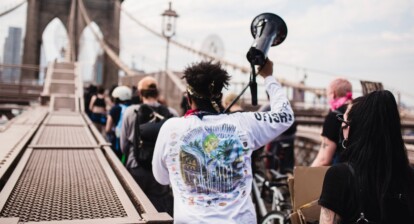
Small SEO Tool December 28, 2023, 08:29
Its like you read my mind You appear to know so much about this like you wrote the book in it or something I think that you can do with a few pics to drive the message home a little bit but instead of that this is excellent blog A fantastic read Ill certainly be back
Forest Goodwin December 31, 2023, 07:25
Ive read several just right stuff here Certainly price bookmarking for revisiting I wonder how a lot effort you place to create this kind of great informative website
Osborne MacGyver January 9, 2024, 08:58
Simple and efficient user interface.
Erica Peterson January 17, 2024, 03:13
I loved as much as you will receive carried out right here. The sketch is attractive, your authored material stylish. nonetheless, you command get got an impatience over that you wish be delivering the following. unwell unquestionably come more formerly again since exactly the same nearly a lot often inside case you shield this hike.
Neuro Brain Cost February 3, 2024, 10:26
Excellent blog here Also your website loads up very fast What web host are you using Can I get your affiliate link to your host I wish my web site loaded up as quickly as yours lol
Ellis Hahn February 4, 2024, 15:09
Your blog is a great source of information.
Elizabeth Steuber February 18, 2024, 18:07
Keep up the excellent work!
Zena Kertzmann February 21, 2024, 13:00
I always learn something new and valuable from your posts.
Leave a Reply Cancel Reply
Your email address will not be published. Required fields are marked *
You may use these HTML tags and attributes: <a href="" title=""> <abbr title=""> <acronym title=""> <b> <blockquote cite=""> <cite> <code> <del datetime=""> <em> <i> <q cite=""> <s> <strike> <strong>
Save my name, email, and website in this browser for the next time I comment.
Remember Me
Lost Password
Please enter your username or email address. You will receive a link to create a new password via email.
Anti-tourism
- Living reference work entry
- Latest version View entry history
- First Online: 25 July 2023
- Cite this living reference work entry

- Julio Aramberri 3
This is a preview of subscription content, log in via an institution to check access.
Access this chapter
Institutional subscriptions
Dodds, R., and R. Butler, eds. 2019. Overtourism: Issues, realities and solutions . Berlin/Boston: de Gruyter.
Google Scholar
Hughes, N. 2018. ‘Tourists go home’: Anti-tourism industry protest in Barcelona. Social Movement Studies 17 (4): 471–477.
Article Google Scholar
Kalder, D. 2006. Lost cosmonaut: Observations of an anti-tourist . New York: Scribner.
Murphy, P. 1985. Tourism: A community approach . London: Methuen.
UNWTO. 2023. UNWTO Welcomes Members of the Americas to Ecuador | UNWTO.
Download references
Author information
Authors and affiliations.
Independent Researcher, Valencia, Spain
Julio Aramberri
You can also search for this author in PubMed Google Scholar
Editor information
Editors and affiliations.
School of Hospitality Leadership, University of Wisconsin-Stout, Menomonie, WI, USA
Jafar Jafari
School of Hotel and Tourism Management, The Hong Kong Polytechnic University, Hong Kong, China
Honggen Xiao
Section Editor information
Faculty of Tourism and Graduate School of Tourism, Wakayama University, Wakayama, Japan
Kumi Kato Ph.D
Rights and permissions
Reprints and permissions
Copyright information
© 2023 Springer Nature Switzerland AG
About this entry
Cite this entry.
Aramberri, J. (2023). Anti-tourism. In: Jafari, J., Xiao, H. (eds) Encyclopedia of Tourism. Springer, Cham. https://doi.org/10.1007/978-3-319-01669-6_508-2
Download citation
DOI : https://doi.org/10.1007/978-3-319-01669-6_508-2
Received : 25 February 2021
Accepted : 01 July 2023
Published : 25 July 2023
Publisher Name : Springer, Cham
Print ISBN : 978-3-319-01669-6
Online ISBN : 978-3-319-01669-6
eBook Packages : Springer Reference Business and Management Reference Module Humanities and Social Sciences Reference Module Business, Economics and Social Sciences
- Publish with us
Policies and ethics
Chapter history
DOI: https://doi.org/10.1007/978-3-319-01669-6_508-2
DOI: https://doi.org/10.1007/978-3-319-01669-6_508-1
- Find a journal
- Track your research
- Get in touch
- Visit our blog
Resident backlash and anti-tourist sentiment: a running list
Destination marketing strategy + dmo leadership.
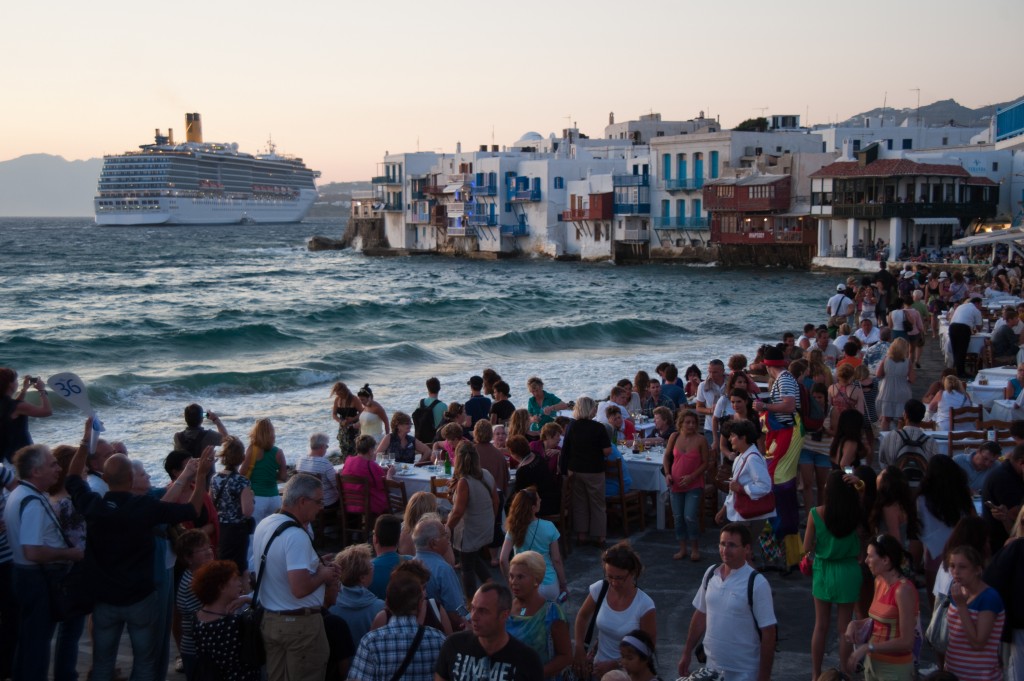
- Recent Posts
- The allyship journey: Gathering settler support for Indigenous-led tourism - 9 April 2024
- Sustainable solutions: The net-positive-energy lodge inspiring Queenstown Lakes to reach carbon zero - 23 January 2024
- Changemakers live here: Lessons from 3 more places that inspired us this year - 12 December 2023
22 September 2017
4 comments(s).
It’s no secret that visitor overcrowding and the effects of mass tourism have lead to outcry that popular destinations are losing their authenticity and the much-needed support of locals. Longstanding grievances at ‘invasions’ of visitors escalated this summer across popular European cities into angry protests, searing public graffiti, and even violent confrontations.
Resident backlash has been particularly dramatic in highly popular locations such as Barcelona and Venice, yet the phenomenal growth of mass tourism when left unchecked is negatively impacting travel destinations and in turn travel experiences across the globe. Boutique towns and internationally renown cities are feeling the strain, but so too are ‘Instagrammable’ natural wonders and wilderness areas like Yellowstone National Park, fragile Icelandic ecosystems, and previously pristine Thai beaches.
It’s clear the plethora of pain points that arise for destinations, visitors, and residents when tourism is mismanaged are not going away. Far from being contained to a quickly forgotten news cycle, these situations simmer and flare while posing a direct business risk to tourist destinations that is ultimately preventable. Under pressure, many organizations fall back into shortsighted strategies that lock them into patterns of reactivity rather than effective flexible change management.

What’s happening?
For key destinations most strongly associated with resident backlash and overcrowding, it’s important to be reminded of the staggering scale of these visitation increases. Note the emotional use of language throughout the articles and examples we’ve compiled here and that you’re sure to come across yourself. Floods, swarms, ruined, trampled etc: the impacts compound and are felt in spaces and communities every day. The three examples below are just the tip of the iceberg, the global scale of the issue continues with a running list of headlines at the end of this article.
- Visitors rose from 1.7 million in 1990 to more than 7.4 million in 2012 .
- In 2016 the city’s 1.6 million residents were heavily outnumbered by an estimated 32 million visitors , about half of them day-trippers.
- Quality of life for residents has decreased: rent hikes and affordability issues as infrastructure gets devoted to tourist market, no tourist-free zones to be found, sentiment that beloved neighborhoods and communities have been turned into tacky theme parks, high-profile protests.
- Cruise ship effect: 30,000 cruise ship passengers tramping through the small, ancient city per day during peak season.
- Tourist numbers outstrip the steadily declining resident population of 55,000.
- In danger of losing its World Heritage listing due to run down historic sites and environmental damage caused by cruise ships.
Cinque Terre
- In 2016 an area with 4,000 residents now sees 2.4 million tourists per year .
- Derided in media as being ‘ spoiled’ and ‘ruined’ .
What are they doing about it?
- Legislation: tourist tax and law to limit tourist accommodation .
- Votes to limit cruise ship numbers and presence .
- Considering capping visitation outright.
- Introducing crowd counters for high traffic areas.
- Tourist quota and increased ticket prices.
- Ticketing system or traffic light system to stagger along the trail.
- Aims to reduce visitation from 2.5 – 1.5 million a year.
While measures to mitigate overcrowding are being proposed, the implementation and effectiveness of these tactics often leave lots to be desired as industry and government sectors struggle to agree. Frustrations and grievances continue to arise as residents question if the core issues are truly being addressed in a sustainable way.
What can destinations do about it?
To deal with this challenge, tourism planning must account for social and environmental impacts of tourism, as well as the economic benefits. Most DMOs (Destination Marketing Organizations) start by trying to help residents understand the value of tourism. While this is important, it’s not enough. By the time this need is identified, it’s often the canary in the coal mine alerting to a much bigger challenge.
Instead of targeting volume of arrivals or hotel nights, destinations should strive to attract what we call ‘the right visitor.’ The right visitor adds value to the local community, doesn’t cause a negative environmental impact, and delivers maximum economic benefit.
Managing a destination can be a big leap for destination marketing organizations that have been primarily focused on promoting the destination to drive more visitation. To get started, we recommend that you:
- Redefine what success looks like (beyond economic measures) and create a collective vision for your destination’s future that includes the entire community’s interests.
- Uncover your Place DNA®to understand who you really are, as defined by your residents in order to create right alignment between your community and visitor. This will provide a north star for policy decisions.
- Ensure that your long-term destination management plan goes beyond economic value to look at additional ways that tourism can enhance a destination.
- Ensure that the DMO has a mandate for destination management and takes a leadership role in managing the end-to-end visitor experience.

Image credit: Destination Think
We’ve helped destinations all over the world to plan for the future. In our experience, deep community collaboration and stakeholder engagement during planning are vital to ensuring success.
Most DMOs think this is a problem that won’t affect them. That this only needs to be a consideration for famous cities and tourism hot spots and isn’t real until it’s in their own backyard. This is simply not true. Planning a destination with consideration for its residents is vital to the development of sustainable tourism. Our slide share “ Destination Planning for the Future: Where to Begin ” is a great resource to start addressing this in your own organization.
Running list:
As tourism grows unmanaged, we are keeping tabs. Here’s our running list of the impacts of unmanaged tourism growth that we’ll be updating periodically. We welcome your contributions, observations, and insights and will be following them closely in the comments.
- Time to get serious about over tourism?
- Skye islanders call for help with overcrowding after tourism surge
- ‘Tourism kills neighbourhoods’: how do we save cities from the city break?
- ‘This isn’t tourism, it’s an invasion,’ say protesters against mass tourism in Spain
- Are Tourists Still Welcome After Protests?
- Summer lovin’? Not in Angry Europe’s Tourist Hot Spots
- Barcelona’s anti-tourism protesters launch beach demo to reclaim city from holidaymakers
- These European cities are fed up with tourists
- ‘ Imagine living with this crap’: tempers in Venice boil over in tourist high season
- From Venice’s Cruise Ships to Taking Food Off the Locals’ Plates in Cuba: 6 Places That are Being Destroyed by Tourism
- Is tourism in Thailand becoming unsustainable?
- Thailand closes ‘overcrowded’ Koh Tachai island to tourists
- How A Surge in Visitors Is Overwhelming America’s National Parks
- Utah’s crowded Zion National Park may require reservations
- The places social media has ruined
- A crowded paradise: New Zealand’s tourism boom faces backlash
- Jammed: Overcrowding at the world’s most popular tourism sites
- In Tourist Destinations, a Picture of Excess
- 20 overcrowded sights that should cut visitor numbers
- Amsterdammers v tourists: ‘It’s worst when they throw up in your plant box’
- Tourism in Iceland Booming, but Faces Overtourism
- Edinburgh locals raise alarm about tourism
- Kyoto residents now complain about hordes of overseas tourists
- Amsterdam has a new solution for overtourism
- Philippines closes ‘cesspool’ tourist island of Boracay
- Anger Over Tourists Swarming Vacation Hot Spots Sparks Global Backlash
- ‘Tourists go home, refugees welcome’: why Barcelona chose migrants over visitors
- Amsterdam Tourism Authorities Face Improper Behaviour of Tourists
- Destinations urged to take heed when tourists overwhelm locals (includes input from our Chief Strategist, William Bakker)
- The backlash against overtourism
- Europe Working on New Tourism Brand Positioning: Value Not Volume
In the meantime, some Lisbon locals are taking matters into their own hands in creative ways to reconnect visitors to place.
See: Lisbon’s ‘We Hate Tourism’ Tours Teach Visitors to Travel Responsibly
Related reading from Destination Think:
- Amsterdam’s response to exponential tourism growth and its impact on residents
- If your visitors disappeared, would your residents miss them?
- How do your residents feel about tourism? Visit Flanders studies local perceptions of carrying capacity
- Iceland’s stunning tourism growth offers a window into the future of destination management
- Is mass tourism destroying our cities? Bye Bye Barcelona documentary investigates
- Copenhagen declares “The End of Tourism as We Know It” in 4-year destination strategy
Featured image credit: Wikimedia Creative Commons
You state: ‘Instead of targeting volume of arrivals or hotel nights, destinations should strive to attract what we call ‘the right visitor.’ The right visitor adds value to the local community, doesn’t cause a negative environmental impact, and delivers maximum economic benefit.’ This is easier said than done. I have a number of questions/observations: 1. Where do ‘the wrong tourists’ go? Or must they stay at home? 2. How does the right visitor add value to the local community in a city trip, with the exception of doing so economically? 3. All long haul travellers who fly or come on a cruise ship or in a touring car have. in varying degrees, a negative environmental impact. Should they too stay at home? 4. What percentage of (potential) visitors do DMO’s reach before they arrive in a destination? The fiqures I have seen are (far) below 20%. The most (potential) travellers are influenced by word of mouth from friends, family, colleagues, etc., or through the media on which DMO’s only have a very limited influence/control. I am interested in your response to these 4 points.
Thanks for your comment and questions Stephen. This topic is rapidly floating to the top of conversation anywhere including many places that want to stay ahead of potential challenges.
We are in business because we believe in what is written on the walls of the University of Berlin: “The most dangerous worldview is the worldview of those who have not viewed the world.” (Alexander von Humboldt). For us, believing in the dynamics of travel is to not give up on humankind.
On a fundamental level, we agree with Anna Pollock who advocates that a systemic shift is needed and that this shift probably goes beyond the boundaries of tourism. When working within the system, we take inspiration from Jane Jacobs’ bottom-up approach and Jeremy Rifkin’s win-win-win strategies. Based on their thinking, the point is that the residents should decide the answer to many of the questions you ask. They are often overlooked even though they are actually the heart and soul of a place.
The number and type of visitors should be a decision by the community itself. Anna Pollock calls it your social licence to operate. This licence is dependent on a variety of factors and will be different from place to place, as defined by the community itself. One of the factors DMOs can impact directly is using our concept of the right visitor. The right visitor will expand your social licence to operate.
Visitors can add value to the quality of life in many ways. They can have something in common with the people who live there. They can bring diversity and different perspectives or exchange of ideas. They can decide to move to a place, study there, or open a business. They can increase the reputation of local brands. They can be a reason for environmental protection. They can be the reason for infrastructure and amenities residents enjoy. Also, they can bring intellectual, social, economic or – even more important – what Pierre Bourdieu calls ‘symbolic’ value.
The wrong visitor for one place can be the right visitor for another. By attracting the right visitor, they will attract more visitors like them through word-of-mouth. While a DMO might not have as much control over the message as they think or like, they should and can lead experience delivery by creating the right destination experience that the right visitor will enjoy, and the wrong visitor won’t. For most DMOs, this requires a shift in strategy.
For most places, it’s an opportunity and necessity to get ahead of potential challenges down the road. For others who are dealing with real impacts right now, it is extra challenging because it’s like fixing a leaking boat in the middle of the ocean. We are aware that there is no silver bullet but there are different tools available, and we help places to use them, based on each unique situation.
Thank you William for your reply. I do, however, not feel that you have answered my questions. I am a great fan of Anna Pollock, but is it possible to make a ‘systemic shift’ in small steps with a tsunami on our heals, which is what you seem to propose? As an architect I too am a great fan of Jane Jacobs, however, what in today’s system, certainly in Europe, is the community on a city level? Who is the community and where in Europe do the politicians actually consult and involve the community in their decision making?
You write: ‘The number and type of visitors should be a decision by the community itself. Anna Pollock calls it your social licence to operate. This licence is dependent on a variety of factors and will be different from place to place, as defined by the community itself. One of the factors DMOs can impact directly is using our concept of the right visitor. The right visitor will expand your social licence to operate.’ ….. ‘The community’ no longer exists and certainly not in cities of millions, let alone tens of millions. And if the community no longer exists in an increasingly individualistic society, who is going to decide who ‘the right visitor’ is?
You write [with my reactions between brackets] : ‘Visitors can add value to the quality of life in many ways [but they can also have a negative impact on the quality of life as we are increasingly seeing in popular destinations]. They can have something in common with the people who live there. [But they can also have nothing in common.] They can bring diversity and different perspectives or exchange of ideas. [But only if there is an interaction between locals and visitors and is that actually taking place given the numbers that are travelling and the fact that residents increasingly avoid areas that are popular with tourists?] They can decide to move to a place, study there, or open a business. [But the vast majority don’t and wont!] They can increase the reputation of local brands. [How? Certainly not in a world where international brands dominate.] They can be a reason for environmental protection. [I don’t get what you mean with this one.] They can be the reason for infrastructure and amenities residents enjoy. [Sure, agree.] Also, they can bring intellectual, social, economic or – even more important – what Pierre Bourdieu calls ‘symbolic’ value.[How? Economic, sure. But how do they bring intellectual and social value? Symbolic value, agree, upto a certain level on the ‘irritation ladder’, after which it becomes a negative force.]
What I am trying to say, your view is very optimistic and positive, but it seems to deny the urgency and enormity of the problem. In the words of Anthony Rowley,’It can be a mistake to assume that if something is a “good thing” then more of the same must be even better….’. And we need to do something about this. And if we don’t we will destroy that which is of value. Or in the words of Hans Magnus Enzensberger, “The tourist destroys what he seeks by finding it.” So radical situations require radical measures and that means addressing not only the good, but also the bad.
Lisbon is so packed with turists these days that I wonder whether they really enjoy visiting the city.
Submit a Comment Cancel reply
Your email address will not be published. Required fields are marked *
Save my name, email, and website in this browser for the next time I comment.
Submit Comment
RELATED POSTS

Corporate sustainability isn’t working: Here’s what the travel industry needs to do next
Mar 5, 2024
“You have a huge, powerful constituency that visits you. You can educate them and mobilize them, not to tell you not...

Cultivating connection: the role of Indigenous tourism in sustainability
Feb 20, 2024
“For me, the value, the sustainability and the value of Indigenous tourism is about my culture, my language, my...

Fighting “impact fatigue” to lead rural innovations: stories from Cariboo Chilcotin Coast
Feb 13, 2024
“One of the challenges that we've had in articulating sustainability and the values from the region is that those type...
You’ve found your partner for destination marketing
We work with the most innovative tourism boards in the world to create a vision for each of their destinations, solve business challenges and execute brilliant, integrated campaigns. The expertise we apply to that work is shared in the articles published here and in our DMO Matters newsletter.

Consent* Destination Think may store my data and contact me by email.*
Thank you! You will receive an email to confirm your subscription.
We value and respect your privacy. Click to read our privacy policy.
This site requires JavaScript for certain functions and interactions to work. Please turn on JavaScript for the best possible experience.
Subscribe to The Parliament
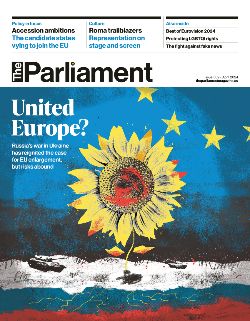
Paradise lost: How overtourism is changing Europe's holiday destinations
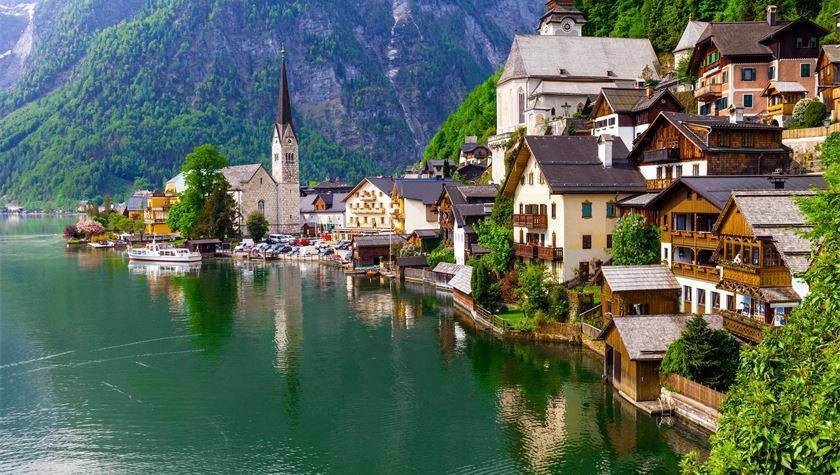
By Valeriya Safronova
Valeriya Safronova is a Vienna-based reporter covering the arts, gender and news
29 Jun 2023
The pleasure boat is packed with tourists. As it glides across the calm waters, most take out their phones and cameras and aim them at the mountains towering over the lake and the colourful houses dotting its shores. With clouds wisping around the peaks and just a hint of sunlight bouncing off the water, the landscape looks magical. The onlookers are on their way to Hallstatt in the Salzkammergut region of central Austria. Over the last 15 years or so, the small town of 740 residents has become a top tourist destination, with 1.2 million visitors in 2019, according to official records. And numbers are expected to be back up to pre-pandemic levels this year.
Tourists are drawn by various claims to fame: the town was listed as a UNESCO world heritage site in 1997; it was featured in a 2006 South Korean romantic drama series; and there are rumours that it inspired the design of Arendelle, the mythical kingdom in Disney’s Frozen.
Hallstatt’s famous landscape has been reproduced many times on social media. Today, there are more than 836,000 posts on Instagram with the #Hallstatt tag, and on TikTok, videos about Hallstatt have nearly 7 million views. The town is so popular that, in 2012, a company in China spent hundreds of millions of euros replicating parts of Hallstatt for a residential development in Guangdong.
In some ways, the tourism explosion has been a boon, bringing funding for social projects and supporting the growth of local businesses. At the same time, locals are frustrated by the amount of litter visitors leave behind; the increased traffic from cars and tourist buses; the drones tourists fly that invade residents’ privacy; and the skyrocketing prices of goods and property.
“People think some of these houses are part of a museum,” Bernadette Krenn, a nursing student who moved to Hallstatt a year ago, tells The Parliament. “They don’t realise people live here. They try to go in.”
All over Europe, cities and towns like Hallstatt have begun to rebel against the painful effects of overtourism, including degradation of nature, overburdened infrastructure, litter, property destruction, and frustrated residents.
So far, overtourism has not entered the policymaking stage at the EU level. According to a 2018 policy paper requested by the European Parliament’s Committee on Transport and Tourism (TRAN), most current references to overtourism began cropping up in literature only as recently as 2017, though there were some studies published in the 1970s.
Covid-19 stalled tourism, and only recently have EU Member States begun to bounce back. In the first three months of this year, international arrivals in Europe reached 90 per cent of pre-pandemic levels, according to the World Tourism Organisation.
Just in time for this return to almost-normal, the European Tourism Agenda 2030 , published last December, underscored the importance of sustainability in travel and called on Member States to share best practices and examples of comprehensive tourism strategies by 2025.
Though policymakers are only beginning to wrestle with the concept, it is clear that “the effects of overtourism are potentially severe”, the report’s authors write.
On average, the report says, tourists are visiting places for shorter periods of time and are choosing them based on rankings of “top destinations”, which causes significant build-up at certain locations during peak periods. Social media is certainly a culprit here, driving tourists to locations deemed Instagram or TikTok-worthy.
The TRAN report found that many tourist destinations are focused on growth with little consideration for their actual capacity, which has led to a rising anti-tourism sentiment across Europe.
“While visitors initially may be welcomed by the resident population because of the income they generate, as visitor numbers increase, local people may feel that their quality of life is threatened and become less welcoming to tourists,” the study claims.
With a lack of policies from the top, many European cities and towns have taken steps to fight overtourism on their own.
Since the summer of 2022, tourists in Marseilles who want to visit the Calanques National Park must make a reservation. The new system is considered such a success that local authorities have decided to keep it in place for the next four years.
In the Amalfi region of Italy, during high-peak periods, non-residents can only drive along the coastal road on certain days. According to the system , which was devised in 2019, cars with licence plates ending in an even number must stay away on even-numbered days, and cars with licence plates ending in an odd number are vetoed on odd-numbered days.
In northern Italy, the medieval village of Corenno Plinio on Lake Como has been charging visitors a €4 entry fee since 2020, effectively turning it into an open-air museum.
In 2021, after years of protests and concerns that Venice could be placed on the World Heritage endangered list, Italian authorities banned large cruise ships weighing more than 25,000 tonnes from docking. Venice authorities have also contemplated imposing a reservation and ticketing system ; encouraged guests to see other islands in the lagoon with a “detourism” campaign ; and levied a small surcharge on travellers departing from Marco Polo di Tessera, the nearest airport to Venice.
Along with all of this, in recent years, Venice has taken to punishing ‘improper’ tourist behaviour . Visitors have been fined and kicked out of the city for misdemeanours including making coffee on the steps of the Rialto Bridge; taking a topless photo on a war memorial; and assembling a picnic on a 300-year-old landmark.
Amsterdam may be following suit, although the city wants to take pre-emptive action rather than reactive. Last spring, in a new online campaign , Amsterdam delivered a “stay away” message to young male British tourists looking for a “messy night”.
Though much of the focus on overtourism has been placed on larger places such as Venice, Marseilles and Amsterdam, “the most vulnerable destinations are not necessarily cities, but rather coastal, islands and rural heritage sites”, according to the TRAN report.
Consider this: each year, Hallstatt hosts 196 overnight tourists per resident. That number soars to 1,600 with the addition of day visitors. For comparison, Venice receives about 21 tourists per resident.
A normal Friday in peak season will see the centre of Hallstatt thronging with tourists. Signs in English, Mandarin and Korean warn them to be “quiet please!” and beware of pickpockets.
Every so often, residents wearing traditional Austrian clothing such as a dirndl or lederhosen will venture on to the crowded streets. Against the branded sportswear favoured by modern globetrotters, the locals’ outfits seem like costumes. The result is less 'functioning Alpine town’, more ‘Disneyland simulation’.
Perhaps that is why some tourists do not seem to understand the town is real, say locals. They report instances of visitors brazenly entering homes on the main street, under the mistaken belief they are part of the town’s decorations.
“It has changed dramatically,” observes a 62-year-old man who was born in Hallstatt and has lived in the town his entire life. “Now it’s like living in a zoo,” he says, referring to visitors’ habit of photographing everyone and everything.
But, he adds, tourism has been good for the local economy. “Otherwise, Hallstatt would be a dying [town],” he says. “Without tourism, there would be no jobs.” The man declines to give his name because of the tense “political situation” around tourism. “There are two different kinds of people: those who are profiting from the tourism, and those who aren’t. And they fight,” he says.
Christian Schirlbauer, the director of tourism of the Dachstein Salzkammergut region where Hallstatt is located, agrees: “If people are not working with tourism, they’re a bit angry that there are so many tourists coming to Hallstatt,” he says. “Hallstatt is really crowded, but you need to recognise that 85 per cent of people in Hallstatt live off tourism. Not just restaurants and hotels, but also bakeries, carpentry workshops, and more.”
In 2015, some Hallstatt citizens formed a new association – Citizens for Hallstatt. One of the group’s main concerns is mass tourism, as they explain on their website : “We are not against tourism across the board – just against its excesses and against its glorification as the sole employer in town.”
The group wants the town to establish a cap on tourist numbers. They are particularly against daytrippers. “What we definitely don’t want are tourists who park for free, eat the snacks they brought with them, leave the rubbish with us, and leave again after 15 minutes,” they state on their website. In May, in a concession to residents who have been complaining about overcrowding on the main thoroughfare for years, Mayor Alexander Scheutz and members of the municipality’s building committee set up an experiment. They erected tall fences in the spot where many tourists stop to take photos, partially blocking an iconic view of Lake Hallstatt, the mountains and the town. It was an “illustrative model”, he said.
Locals quickly responded by saying they did not like the barriers and, after two days, the fences were removed. In their place, the town has put up banners that ask visitors to “enjoy the beautiful view in peace, without loud shouting or music”.
When it comes to being for or against tourism, the town has “a 50-50 split”, according to Nadine Scholz, a receptionist at a local pension who has worked in Hallstatt for five years, but lives in nearby Bad Goisern. “I have no problem with the tourists because I don’t live here. But that’s why I don’t live here. The tourists do whatever they want: they go in your house, they go in your toilet, they sit in your garden.”
Mayor Scheutz points to the economic advantages of tourism. Years ago, he insists, Hallstatt was struggling to attract anyone, in part because of its geographical isolation. The town is in a valley surrounded by mountains and, until the late 19th century, it was only possible to reach it by boat or via narrow trails.
According to Scheutz, income from tourism has allowed the town to finance an all-day pre-school with lunch; afternoon care for primary schoolchildren; social housing; and the construction of a modern practice for the community doctor.
He also says that the flow of tourists has created an incentive for entrepreneurs to open year-round businesses from which locals also benefit, including a bakery, petrol station, grocery store, and a branch of Erste Bank.
Nevertheless, the 20,000 or so tourist coaches that arrive each year in Hallstatt aggravate residents. “These visitors come in large groups and cause a lot of noise and disturbance because they only briefly visit the town centre to get their pictures and then rush back to the bus terminal,” Scheutz concedes.
A few years ago, the town hired a traffic planner and developed ideas to improve traffic flow. Then, with the help of funding from the EU, authorities introduced a system in which tour operators must book a time slot for their coach’s arrival in advance and, once they are in Hallstatt, remain there for at least two and a half hours.
Additionally, visitors are no longer allowed to park in the centre of Hallstatt; those who plan to stay overnight can take advantage of a free shuttle service from the parking lots to their hotels. Whenever the 450 parking spaces in Hallstatt are full, electronic noticeboards encourage tourists to visit other nearby towns or sites.
After all, Hallstatt is not the only place in the region to have received World Heritage status – Bad Goisern, Gosau and Obertraun were also included in the designation. And there are other charming towns close at hand, such as Bad Aussee, a charming town that hosted artists and nobles from Vienna in centuries past and is a 15-minute train ride east of Hallstatt, is a charming town that hosted artists and nobles from Vienna in centuries past. Today, it is a great spot from which to begin hikes, and is close to the beautiful Grundl Lake and the Altaus Lake. A weekend flea market offers many antique discoveries, including jewellery, furniture, and pottery ware.
Anyone keen to explore the Austrian Alps without negotiating large crowds or contributing to degradation caused by overtourism will find plenty of options besides Hallstatt. “There are so many places in the surrounding area you can visit,” says Schirlbauer. “It’s easier than everybody going to Hallstatt at the same time.”

Read the most recent articles written by Valeriya Safronova - "Green Border": A politically charged film about Poland’s migrant crisis

- TV & Film
- Say Maaate to a Mate
- First Impressions - The Game
- Daily Ladness
- Citizen Reef
To make sure you never miss out on your favourite NEW stories , we're happy to send you some reminders
Click ' OK ' then ' Allow ' to enable notifications
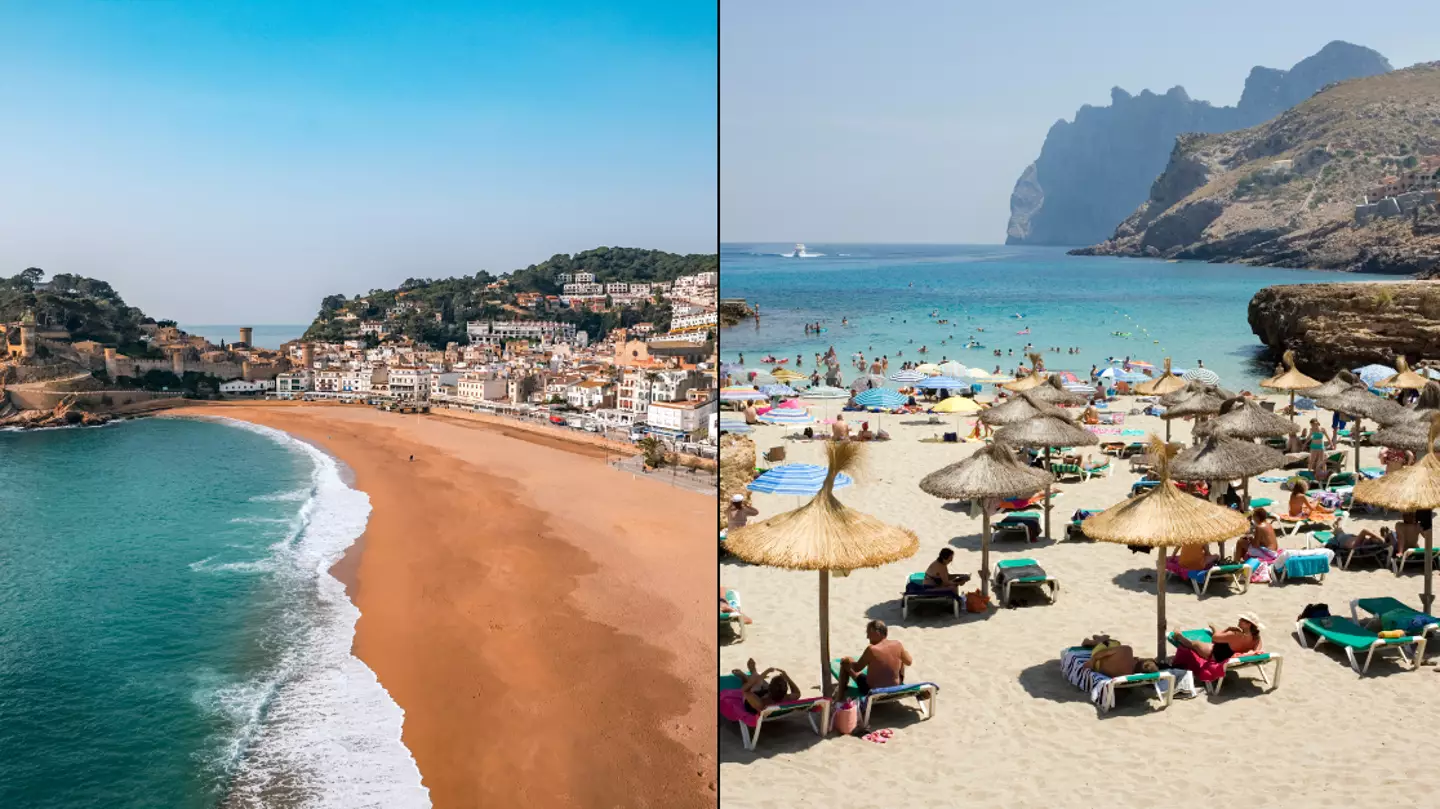
Holiday expert explains how Spain's new £97 daily charge will affect your holiday
All has been explained on the new tourist rule that was introduced in spain.

Joshua Nair
As the weather gets warmer, a lot of us are beginning to get onto those flight and hotel websites to book a summer getaway, with many often favouring Spain as a nearby holiday location with amazing weather.
It is well documented that the European country is a popular holiday hotspot for Brits , so you can imagine that it was a shock when people found out about the new money law put in place there for tourists.
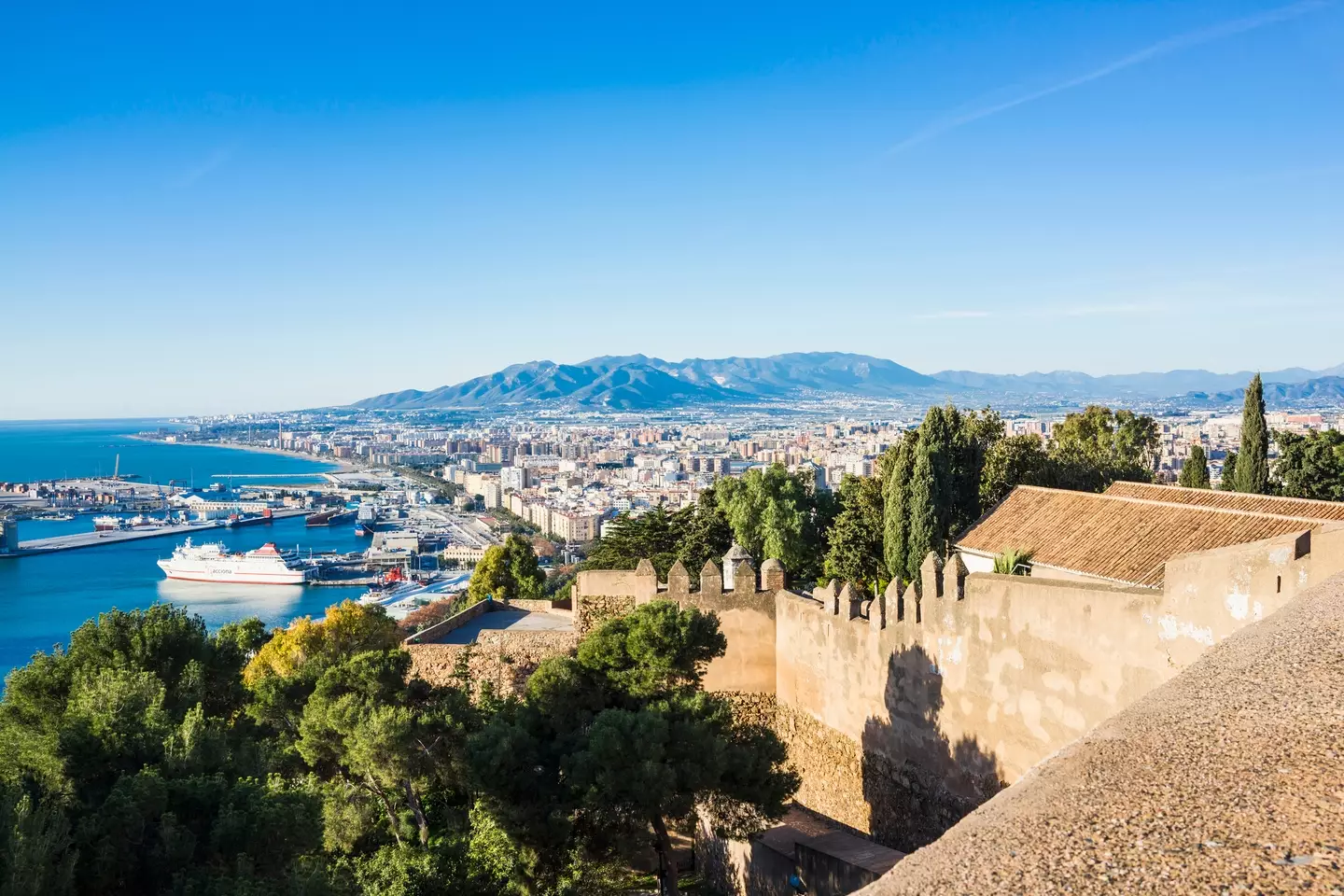
The new law states that Britons must be able to show proof that they have at least €113.40 (£97) per person, per day, during their stay in the country.
It's fair to say that the news hasn't been received well, with many threatening not to go back to the holiday destination following the implemented law.
Chelsea, an expert from cheapholidayexpert.com has explained all the ins and outs of the law, such as what we can do to prepare, how serious it is, and what to do if we don't have the required funds.
How new is this rule?
Well, it turns out that this rule is not new at all, as it has been in effect since 1 January 2022, though back then it was at £85 a day per person, being increased to £93 per day in 2023.
So, there's no reason to be scared, it has been quite standard and in place for a while, though it is under a spotlight now that we're past the COVID years.
Should we blame Brexit?
In short, yes.
As the UK left the EU , Brits don't have the freedom of moving throughout the continent anymore, and have to go through closer, more thorough checks.
This can be anything, such as:
- Showing you have enough money for your stay
- Showing proof of accommodation for your stay
- Showing a return or onward ticket
But this could happen in any EU country, not just being limited to Spain - and with that being said, these rules aren't exclusive to the UK either, instead applying to all third party countries as a standard rule.
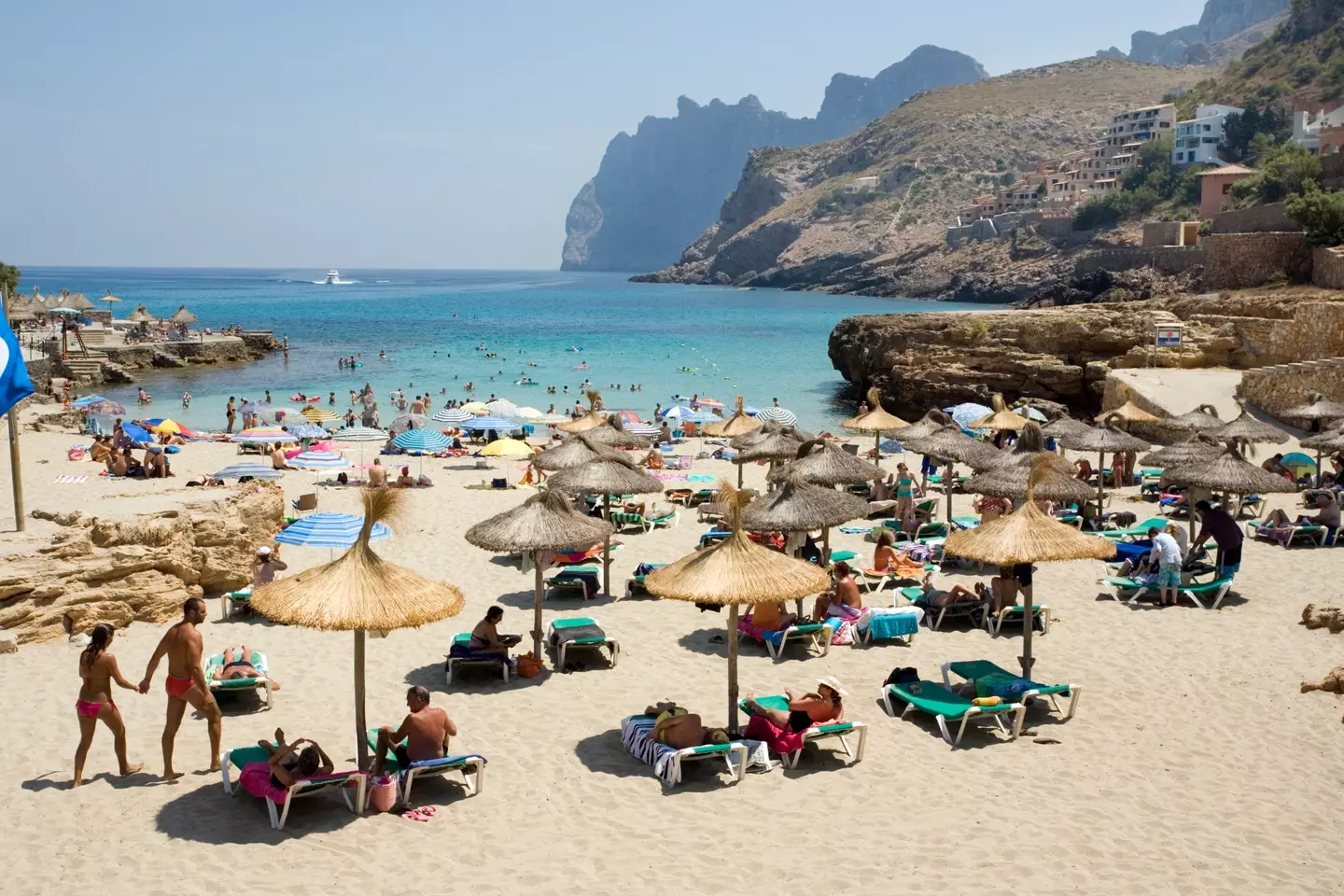
How will it affect my holiday?
The Spanish ministry states that: "Foreigners must prove, if required to do so," about proof of funds, meaning that it isn't compulsory for them to check every tourist's bank statement upon arrival.
Think of it as a random spot check, you may get picked, or you may not.
Has this actually happened to anyone?
Chelsea posted on her Instagram once the news broke, asking people who has travelled to Spain since the start of 2022 to share if they were asked about money.
Only four of the 1373 people asked said that they had, and provided stories about what had happened.
All of them went through the checks in 2022, and only one had to show proof of accommodation, a return flight, and just flashed their credit card to the officer, who seemed unbothered to see a bank statement or account balance.
The others got away with flashing their credit cards, with no real thorough checks taking place according to them.
But with that being said, they may begin to stop more people as the number of tourists into the country increases.
How should I prepare?
No matter how slim the chance, it's key to have the following at hand:
- Confirmation of your return flight or onwards travel
- Confirmation of your booked accommodation and the address of where you’re staying
Screenshots will do, though PDFs and official confirmations will probably look better.

How do I prepare to prove that I have enough money?
First and foremost, you have to work out if you have £97 per day, with people in families or groups having to do more maths to make this work.
Showing bank cards might be the key, so make sure they're easily accessible, though it sounds like officers are looking for verbal confirmation so far from tourists, according to Chelsea.
The Spanish Ministry of Interior also states you can prove it: "...in cash, or by presenting certified checks, traveler's checks, letters of payment, or credit cards, which must be accompanied by a bank account statement or an up-to-date bank book (letters from banks or Internet bank statements will not be accepted) or any other means with which the amount available as credit of said card or Bank account."
What if I don't have enough?
There are no known cases of this yet, but the official ruling from the Spanish government states: "In the event that, when carrying out the entry control of people in Spanish territory, it is verified that a foreigner lacks sufficient economic resources for the time he wishes to remain in Spain and to continue his trip to the country of destination or to return to the country of origin, or do not have the registered, non-transferrable and closed ticket or tickets, in the means of transport they intend to use, their entry into Spanish territory will be denied as established by regulation."
It does also state that in exceptional circumstances, you could still get let in, but the length of your stay may be reduced.
Bottom line: Come prepared!
This is how it's going to be from now on.
Topics: Holiday , Travel , Money , Brexit , UK News
Joshua Nair is a journalist at LADbible. Born in Malaysia and raised in Dubai, he has always been interested in writing about a range of subjects, from sports to trending pop culture news. After graduating from Oxford Brookes University with a BA in Media, Journalism and Publishing, he got a job freelance writing for SPORTbible while working in marketing before landing a full-time role at LADbible. Unfortunately, he's unhealthily obsessed with Manchester United, which takes its toll on his mental and physical health. Daily.
@ joshnair10
Choose your content:

Brits can now book £15 flights to Ibiza and other summer hotspots but for a limited time only
You've barely got any time to take advantage as the ryanair flash sale is well underway.
.png)
McDonald's is bringing back extremely popular burger in new menu shakeup
The fast food giant have brought back the sell-out burger for brits to enjoy.

Man flies drone into lake's 'glory hole' where someone once got sucked into and died
Monticello dam is famous for its 'glory hole'.

Woman sparks debate after refusing to give up 1A plane seat for teen
Would you give up your seat for another passenger.
- Brits warned they must follow new £97 rule if going on holiday to Spain this summer
- Go-to holiday destination considering fines for Brits as Spain introduces £97 a day rule
- UK tourists threaten to 'not go' on Spanish holidays after new £97 rule introduced
- Nine major holiday destinations that are charging Brits more to visit this summer
Tourism Gets a Refresh in the Hands of Activists Seeking to Decolonize the Industry
Operators practicing ‘solidarity tourism’ push back against travel that can be environmentally and socially destructive
:focal(1061x707:1062x708)/https://tf-cmsv2-smithsonianmag-media.s3.amazonaws.com/filer_public/1c/99/1c99250b-81d4-49f6-98d0-f9441afc4d48/gettyimages-1036852070.jpg)
Ten years ago, a group of around 25 young Americans were greeted by Mozambican politician and humanitarian Graça Machel in the country’s capital, Maputo. The tour’s organizer, Prexy Nesbitt , had worked with Machel, the widow of former president of Mozambique Samora Machel and former president of South Africa Nelson Mandela, to set up a special seminar connecting young Mozambican activists with these American counterparts. The only catch? Nesbitt had to go sit on the bus, because the twenty-somethings wanted to be able to talk in private.
“I had to go and read for a couple of hours,” Nesbitt jokes. Some of the Americans who went on that trip later became Black Lives Matter organizers.
/https://tf-cmsv2-smithsonianmag-media.s3.amazonaws.com/filer_public/7f/d5/7fd58296-27e5-4158-b884-f023d098aaae/prexy_nesbitt_and_graca_machel_2006.jpg)
For decades, Nesbitt has been deeply involved in liberation struggles in southern Africa. The Chicago native first became involved in civil rights activism in his hometown, but travels to southern Africa and Sweden in the mid-1960s broadened his perspective and introduced him to a whole host of anti-colonial struggles. He led divestment groups and support committees in his hometown of Chicago, worked as an advisor for the World Council of Churches, and served as a lobbyist for the Mozambican government during some of the worst violence in Mozambique’s 15-year civil war. And just as South African apartheid was ending, he launched a new focus for his activism: travel.
“Around 1990, just about the time Mandela was released,” Nesbitt recalls, “I took 20 or 25 Swedish church people from the Västerås Diocese [a division of the Swedish church] on a tour of South Africa and Lesotho. Then I started taking students, college students, and we’d take buses all over southern Africa.”
For Nesbitt, the pedagogy was simple: move past stereotypes and ignorance to what southern Africa was really like. “People meeting people, and getting beyond the elephants,” he says.
Others since have shared Nesbitt’s instincts, and his travel group Making the Road , formally incorporated in 2000, is now part of a larger network of organizations that engages in what is increasingly termed “solidarity tourism” or “justice tourism.”
/https://tf-cmsv2-smithsonianmag-media.s3.amazonaws.com/filer_public/f9/d0/f9d0f758-f0bf-4f13-b15d-44c06ffe94cf/2017_cuba.jpg)
“I use it [solidarity tourism] as an umbrella term for a lot of different forms of tourism: decolonial tourism, critical tourism, or political tourism,” says Jennifer Kelly , a sociologist at University of California, Santa Cruz. The practice is in many ways a direct result of the tourism practices it critiques; implicit in it is a critique of the way that traditional tourism comes with significant environmental costs, essentializes and exoticizes people elsewhere, and reduces them economically to providing services for visitors. “It’s really crucial to understand that tourism facilitates colonialism and replicates colonial state practice,” Kelly adds.
Solidarity tourism grew out of both the rise of mass tourism in the mid-20th century, which has grown to be a trillion-dollar industry, and the rise of transnational activism. Groups like the American Friends Service Committee , a Quaker activist group, and other religious organizations sent study-abroad trips to places like South Africa and Israel beginning in the 1950s. Revolutionary movements like the Sandinistas in Nicaragua in the 1970s also attracted travelers interested in seeing what conditions on the ground were really like.
Drawing on these earlier traditions, today’s solidarity tourism groups push back against travel as a consumptive industry that can be environmentally and socially destructive. They instead create economic opportunities for local communities, foster real cultural exchanges between tourists and residents, and educate participants about the social, political and environmental issues at play in the places that they visit.
/https://tf-cmsv2-smithsonianmag-media.s3.amazonaws.com/filer_public/c7/e0/c7e0eee5-ccb2-4c08-aec6-4fd9849bd40d/265682157_2e90b696fc_o.jpg)
Making the Road’s name comes from a quote from Paulo Freire , the late Brazilian educator and philosopher who professed that the educational process was about applying knowledge in ways that better societies: “We make the road by walking.” Now, more than two decades after its founding, groups led by Nesbitt visit Namibia, Mozambique, Zimbabwe and South Africa, where they meet with activists, artists, politicians and historically significant figures.
Averaging one or two offerings a year, with groups of up to 40 participants, Making the Road tailors its travel experiences to its clients. A “typical” trip to Africa includes a couple of days in Johannesburg to see the Apartheid Museum and Soweto [a township outside of Johannesburg that was the site of anti-apartheid organizing and violence for years], followed by a stop in Windhoek, Namibia, to meet with Namibian labor leaders, and concluding in Mozambique to visit with local artists. However, the itineraries also vary substantially. One trip in 2009 was focused on poets, and the group of logophiles spent time with the late Kerapetse William Kgositsile , a South African poet and luminary, as well as revolutionary and freedom poet Jorge Rebelo in Mozambique, and anti-apartheid activist and writer Hugh Lewin in South Africa. In total, more than 400 people have participated in Making the Road trips since its founding.
/https://tf-cmsv2-smithsonianmag-media.s3.amazonaws.com/filer_public/ed/0c/ed0c6d47-c292-4eeb-a2b5-94c31025f384/dsc021551jpg_prexy_and_willie_kgositsile_2014.jpg)
Kelly studies solidarity tourism in the context of the contested lands of Gaza and the West Bank, where tour operators welcome visiting groups and acquaint them with conditions in the Palestinian territories.* In her own research, she’s learned how both tourists and locals can benefit from this travel trend, which tracks with increased interest globally in sustainable and ethical travel. A decade ago, Kelly says solidarity tourism made up only 5 percent of the entire Palestinian tourism industry, but it has grown since then. Pastors from American churches visit Palestine so that they can bring lessons back to their congregations, prison abolitionists from the United States network with people doing similar work across borders, and corporate accountability advocates learn more about how international businesses are behaving in the territories.
Another group, in Hawaii, called DeTours runs similar tours aimed at deconstructing the tourist understanding of the islands. Kyle Kajihiro founded the Honolulu-based educational tour group with Terry Keko-olani.
“It began informally because I used to work for the American Friends Service Committee, and visiting friends, activists and scholars would have meetings in Hawaii,” Kajihiro explains. “But it always frustrated me that when folks think of Hawaii, they switched off part of their brain that was critical and conscientious.”
Informal exposure tours, where local guides take tourists to sites, became a way to counter what Kajihiro calls “popular discourses that portray Hawaii as a tourist playground and as a multicultural paradise.” To Kajihiro, those narratives are destructive because they obscure the ongoing effects of settler-colonialism and militarism.
The first of those occurred in 1997, when Kajihiro led a group of visiting activists around the island. Now, DeTours offers four to six tours a year to visit military sites and other important places in Hawaiian history. Notably, the tour group doesn’t take money and runs entirely off of volunteer labor.
“We don’t have a presence on the internet, and I had to think about why that is,” Kajihiro says. “When people are paying for something, it changes what they expect to get.”
/https://tf-cmsv2-smithsonianmag-media.s3.amazonaws.com/filer_public/fe/49/fe49e892-d0df-42db-b28a-c169ee2efa00/gettyimages-1265264603.jpg)
DeTours’ intent is to underscore the very real challenges facing the Hawaiian Islands. The group makes frequent stops at Pearl Harbor to share the site's history separate from the attack on December 7, 1941, first as a critical fishery for Indigenous Hawaiians, and today as a Superfund site contaminated by military activity. Trips also show how Indigenous Hawaiians and others have resisted in places like Kahoolawe, the smallest of the eight main volcanic islands in Hawaii, where the U.S. military relinquished the land and started a cleanup process. Tours include visits to the Iolani Palace , the last residence of the Hawaiian monarchy, but also to working-class neighborhoods like Kalihi that are not part of a normal tourist itinerary. Visits usually end at the Hanakehau Learning Farm , where Indigenous Hawaiians are working to restore land damaged by military pollution. A goal of DeTours is to impart kuleana , or the belief in responsibility to the land and what it is owed, to visitors, so that they contemplate what their relationship should be to a place that isn’t their home.
For Kajihiro, the Covid-19 pandemic has in some ways presented an opportunity to rethink what people really want from a tourist-driven economy.
“I’d like to abolish the word ‘tourism,’” he says. “It does something really problematic by turning it into a consumptive, extractive experience. Journeying to other places and meeting other people can be a good thing, an enriching thing, a building of solidarity.”
Breaking Down Barriers Worldwide
With trips around the globe, here are five more groups participating in solidarity tourism.
Eyewitness Palestine
Eyewitness Palestine takes visitors to the occupied territories to help them learn more about the conditions facing Palestinians and to meet with both Palestinian and Israeli peacemakers. Founded in 2001, the educational program began as an outgrowth of the Fellowship of Reconciliation, an interfaith peace and justice organization in the U.S. Eyewitness Palestine is leading three delegations this year, dealing with conditions faced by Palestinian farmers, race and class, and more.
Global Exchange
Founded in 1988 (with the help of one of Nesbitt’s associates, Kevin Danaher), Global Exchange uses travel to critique globalization and unethical business practices in the global South. The group offers dozens of “reality tours” each year to spots worldwide, shedding light on global problems and, as its website notes, suggesting “ways in which we can contribute to positive change locally and internationally.” Upcoming trips in 2022, which support local lodgings and guides, include an 8-day trip to Oaxaca during Holy Week to meet with Indigenous activists and a 10-day trip to Cuba to learn more about the country’s health care system and Covid-19 response.
Communities for a Better Environment – Toxic Tours
Participants in Toxic Tours visit parts of California where pollution and environmental catastrophes affect the poor and socially marginalized. Communities for a Better Environment began running these trips in 1995 to show visitors to California how oil refineries, recycling plants, ports and other infrastructure can lead to asthma, birth defects and cancer in the people who live in the vicinity of them.
Insider Peace Tours of Viet Nam
Run by a chapter of Veterans for Peace, this group leads annual two-week trips to Vietnam to learn about the country’s reconstruction and its history before and during the war. Participants are frequently Vietnam veterans or peace activists who use the tour as an opportunity to reflect on their war experiences. Attendees are required to donate a minimum of $1,000, which goes towards community needs, like bomb clearing work and help for victims of Agent Orange. Since 2012, the group has raised $250,000 for these efforts.
AfroLatino Travel
For 12 years, this group, which describes itself as a “network of Black Latin Americans based throughout the Americas,” has organized travel opportunities for student groups and individuals that provide greater awareness of the African diaspora and community. They offer tours to a variety of different countries—Peru, Panama, Cuba, Colombia, and more—with programming themed around the history of the African diaspora in Latin America as well as Afro-Latinx culture. “We craft trips where you get to the heart of African history, cultures, spirituality, food, music and dance all with the support of the Black community and business in each destination,” notes the group’s website. They suspended in-person tours in 2021 and have yet to announce any for 2022, but, in the meantime, the group is offering virtual workshops on cultural topics.
(*Editor's Note, March 28, 2022: This article has been updated to clarify the terminology used with regards to the contested Palestinian territories in Gaza and the West Bank.)
Get the latest Travel & Culture stories in your inbox.
- 11 Angry Tourist Hotspots That...
11 Angry Tourist Hotspots That Are Best Avoided This Summer

Recent weeks have seen a wave of anti-tourist protests erupting across Europe, from Spain to Croatia and beyond. As local residents voice their anger at rising housing costs, overcrowded streets and a sense that the tourist boom benefits some more than others, here are some of the places you may want to steer clear of this summer if you want to avoid confrontation.
Protests kicked off back in July in the Italian city of Venice , where some 20 million visitors a year are added to the 55,000 residents who live here all year round. The protests saw around 2,000 locals take to the streets to denounce, among other things, the environmental impact of tourism on the city, with tourist buses and boats swamping the city in peak season, as well as the rising cost of renting property in the city.

Tackling similar issues to those described in Milan, Rome ‘s local council has introduced a ban on a number of items and actions that it believes are affecting the quality of life of local residents. Stricter regulations have been imposed for drinking on the streets of Rome at night, as well as a ban on paddling in public fountains. Tourists have been asked to stop littering by throwing leftover food and wrappers on the ground, and to be more considerate of street cleanliness.

The Catalan capital has seen waves of anti-tourist protests, with graffiti saying ‘tourists go home’ and ‘tourism kills’ popping up across the city. Worse cases of vandalism have involved a tourist bus that had its tyres slashed and its windows spray-painted, and tourist bikes being targeted. Local residents are angry at rising rent costs, with certain neighbourhoods, such as the Gothic Quarter, having more beds available for tourists than for permanent residents.

Palma de Mallorca
The island of Mallorca has seen anti-tourist demonstrations and graffiti across the city of Palma de Mallorca, as well as smoke flares being set off in front of diners in a popular tourist area. Residents fear that tourism is turning the town into a theme park, where locals can no longer afford to live. Last August saw a record two million visitors in one day across the Balearic Islands, nearly doubling the normal population size.

The northern Spanish city of Bilbao is another place where locals have voiced anger at the impact of tourism in their area. Activists spray-painted the Basque Country tourist board in Bilbao earlier in August, as locals voiced their frustration at the changing face of the city. Attractions such as the Guggenheim Bilbao museum and the Old Town of Bilbao make Bilbao one of the biggest tourist sites in the Basque Country.

San Sebastian
Mostly known for its world-famous gastronomic scene, San Sebastian made the headlines recently for a number of anti-tourism protests. The next large protest is set for August 17, during the height of the Semana Grande (‘Big Week’) public celebrations – a popular attraction for visitors to the Basque Country.

The Croatian city of Dubrovnik has been one of the latest tourist destinations to introduce measures to appease angry local residents. Plans have been introduced to regulate the number of tourists in the Old Town of Dubrovnik, as well as to restrict the number of cruise ships entering the port from five a day to two. Up to 5,000 cruise-ship guests enter the city each day, with 10.5% more tourists visiting the city in July 2016 compared to the same month last year.

In recent years Hvar has become famous for being one of the biggest party islands in Europe, rivalling the likes of Ibiza. This hasn’t gone unnoticed by local residents, who have voiced their discontent at the antisocial behaviour of the party-goers. The local council has introduced huge fines for drinking in public (€700), wearing swimsuits in the historic town centre (€600) and not wearing a top in the town (€500).

The Netherlands saw their own anti-tourist protests this summer, with activists squatting the apartment building of the CEO of holiday-booking website Booking.com in Amsterdam . Locals have seen a surge in rental prices and dangerous overcrowding in certain areas. There has also been a rise in anti-tourist graffiti, with slogans such as ‘stop mass tourism’ popping up on walls of what are believed to be illegal rental properties.

Defecating in the open air, stealing road signs and even stealing a young lamb to be cooked on a barbecue are just some of the actions of tourists that have angered locals in Iceland . Tourism here has boomed since the 2008 financial crisis practically destroyed the local economy, yet recently, local residents in cities such as Reykjavik have struggled to cope with the social and environmental impact of the industry.

Since you are here, we would like to share our vision for the future of travel - and the direction Culture Trip is moving in.
Culture Trip launched in 2011 with a simple yet passionate mission: to inspire people to go beyond their boundaries and experience what makes a place, its people and its culture special and meaningful — and this is still in our DNA today. We are proud that, for more than a decade, millions like you have trusted our award-winning recommendations by people who deeply understand what makes certain places and communities so special.
Increasingly we believe the world needs more meaningful, real-life connections between curious travellers keen to explore the world in a more responsible way. That is why we have intensively curated a collection of premium small-group trips as an invitation to meet and connect with new, like-minded people for once-in-a-lifetime experiences in three categories: Culture Trips, Rail Trips and Private Trips. Our Trips are suitable for both solo travelers, couples and friends who want to explore the world together.
Culture Trips are deeply immersive 5 to 16 days itineraries, that combine authentic local experiences, exciting activities and 4-5* accommodation to look forward to at the end of each day. Our Rail Trips are our most planet-friendly itineraries that invite you to take the scenic route, relax whilst getting under the skin of a destination. Our Private Trips are fully tailored itineraries, curated by our Travel Experts specifically for you, your friends or your family.
We know that many of you worry about the environmental impact of travel and are looking for ways of expanding horizons in ways that do minimal harm - and may even bring benefits. We are committed to go as far as possible in curating our trips with care for the planet. That is why all of our trips are flightless in destination, fully carbon offset - and we have ambitious plans to be net zero in the very near future.

Guides & Tips
Top tips for travelling in spain.

The Best Places to Travel in June

Places to Stay
The best hotels to book in catalonia.

The Best Hotels to Book in Salou, Catalonia

Bars & Cafes
The best wine bars in la rioja, spain.

The Most Beautiful Train Stations in the World

The Most Unique Temples and Churches in the World

See & Do
Getting a taste of picasso in malaga.

Reasons Why You Should Visit La Rioja, Spain

The Best Private Trips to Book for a Foodie Adventure

The Best Private Trips to Book for Your Spanish Class

Reasons Why You Should Visit Andalucia, Spain
Culture trip spring sale, save up to $1,100 on our unique small-group trips limited spots..

- Post ID: 1473788
- Sponsored? No
- View Payload
- Election 2024
- Entertainment
- Newsletters
- Photography
- Personal Finance
- AP Investigations
- AP Buyline Personal Finance
- Press Releases
- Israel-Hamas War
- Russia-Ukraine War
- Global elections
- Asia Pacific
- Latin America
- Middle East
- Election Results
- Delegate Tracker
- AP & Elections
- March Madness
- AP Top 25 Poll
- Movie reviews
- Book reviews
- Personal finance
- Financial Markets
- Business Highlights
- Financial wellness
- Artificial Intelligence
- Social Media
Some fear University of Michigan proposed policy on protests could quell free speech efforts
Demonstrators at the University of Michigan Diag protest the university’s draft Disruptive Activity Policy on Thursday, April 4, 2024, in Ann Arbor. A University of Michigan proposal aimed at deterring disruptions on its Ann Arbor campus after anti-Israel protesters interrupted an honors convocation is sparking backlash from free speech advocates. (Zena Issa/Michigan Public Radio via AP)
A group of demonstrators on the University of Michigan Diag Thursday, April 4, 2024, in Ann Arbor counterprotests as another group urges the university not to adopt a new policy meant to reduce disruptive demonstrations on campus. A University of Michigan proposal aimed at deterring disruptions on its Ann Arbor campus after anti-Israel protesters interrupted an honors convocation is sparking backlash from free speech advocates (Zena Issa/Michigan Public Radio via AP)
FILE - Santa Ono is introduced as the new president of the University of Michigan, Wednesday, July 13, 2022, in Ann Arbor, Mich. A University of Michigan proposal aimed at deterring disruptions on its Ann Arbor campus after anti-Israel protesters interrupted an honors convocation is sparking backlash from free speech advocates. Violations of the policy, which has yet to be implemented, could result in suspension or expulsion for students and termination for university staff. (AP Photo/Carlos Osorio, File)
- Copy Link copied
A University of Michigan proposal aimed at deterring disruptions on its Ann Arbor campus after anti-Israel protesters interrupted an honors convocation is sparking backlash from free speech advocates.
Violations of the policy, which has yet to be implemented, could result in suspension or expulsion for students and termination for university staff.
The March 24 protest by groups calling for the school to divest from companies linked to Israel is among a number of demonstrations on college campuses across the United States in which students and organizations have taken sides — in support of Palestinians or of Israel — as Israel continues its 6-month-long war in Gaza against Hamas.
University of Michigan President Santo Ono said in a letter to the campus community that the protesters who disrupted the annual honors undergraduate graduation ceremony “brought profound disappointment to students, parents, grandparents, siblings, and other relatives and friends.”
“We all must understand that, while protest is valued and protected, disruptions are not,” Ono wrote. “One group’s right to protest does not supersede the right of others to participate in a joyous event.”
“It was painful for everyone who had gathered — and especially so for members of our Jewish community,” Ono added.
The Oct. 7 attack on Israel by Hamas left 1,200 people, mostly civilians, dead. Militants took roughly 250 people hostage, according to Israeli authorities.
Israel’s response to the attack has been devastating. Bombardments and ground offensives have killed more than 33,600 Palestinians in Gaza and wounded over 76,200, the Gaza Health Ministry says. The ministry doesn’t differentiate between civilians and combatants in its tally but says women and children make up two-thirds of the dead.
A group of demonstrators at the University of Michigan on Thursday, April 4, 2024, in Ann Arbor, counterprotests as another group urges the university not to adopt a new policy meant to reduce disruptive demonstrations on campus. (Zena Issa/Michigan Public Radio via AP)
The war has ignited a humanitarian catastrophe. Most of the territory’s population has been displaced, and with vast swaths of Gaza’s urban landscape leveled in the fighting, many areas are uninhabitable.
Students Allied for Freedom and Equality, which calls itself a Palestinian solidarity group, posted on social media that students shut down the University of Michigan convocation to demand the school divest from Israel and “war profiteers facilitating genocide.”
The Associated Press left emails this week seeking comment from organizers of the protest.
Some University of Michigan students walked out of classes on April 4, protesting the school’s ties to Israel and the planned policy, which, among other things, would prohibit disrupting speakers or performers. Students violating the policy could face reprimand, disciplinary probation, restitution, removal from a specific course, suspension or expulsion.
Staff members violating the policy could face misconduct allegations, and the school “may institute discipline, up to and including termination.”
The policy, if enacted as is, would apply to all students, employees, contractors, volunteers and visitors who engage in disruptive activity.
FILE - Santa Ono is introduced as the new president of the University of Michigan, Wednesday, July 13, 2022, in Ann Arbor, Mich. (AP Photo/Carlos Osorio, File)
“We will not shy away from protecting the values we hold dear,” Ono wrote in a follow-up letter to the campus community. “Those who participate in disruptive activity will be held accountable.”
Michigan sophomore Annabel Bean said the school appears to be trying to limit and repress student protests.
“The guidelines are just really a huge overstep I think in my opinion,” Bean told WXYZ-TV . “The point of a protest is to be disruptive and if you’re saying it can’t be disruptive, then we’re not protesting, and how are you honoring your history of disruptive student protests?”
The American Civil Liberties Union of Michigan said it is concerned the proposed policy, as drafted, will impair civil liberties on campus.
“We believe the proposed policy is vague and overbroad, and risks chilling a substantial amount of free speech and expression,” the ACLU Michigan said in a letter to Ono. “We recognize that the university has an interest in carrying out its operations without major disruptions; however, in attempting to achieve that goal, the proposed policy sacrifices far too much.”
The university is reviewing comments from the community to ensure any new policy reflects the school’s mission and values, Assistant Vice President of Public Affairs Colleen Mastony said in an email.
“The university will not rush the development of this new policy,” Mastony said. “We will ensure all voices have an opportunity to be heard. Our goal is to make policies clearer, ensure key terms are well defined, incorporate pathways for restorative action, and support respectful discussion of divergent viewpoints.”
As it reads now, the proposed policy lacks clarity, said Thomas Braun, a biostatistics professor.
“For faculty, who are not on the tenured track or not tenured, the worry is this overreaching policy ... it’s unclear what sanctions can be given to faculty,” said Braun, adding that there is fear of being denied tenure “because of something you participated in.”
Braun, who also is chair of the Senate Advisory Committee on University Affairs, said there always is a debate on the school’s campus regarding freedom of speech and freedom of the press.
“I can support free speech and still be for one side or the other,” he said. “This issue has made it very clear to me that I have been oblivious to the experiences of the Palestinians in Gaza. At the same time, I can’t think I can condone the entire removal of Israel as a state. How does a campus deal with its own turmoil around this issue, while at the same time being asked to solve the world’s issues?”

IMAGES
VIDEO
COMMENTS
Overwhelming crowds of visitors have stirred anti-tourism sentiments in Barcelona, Spain. ... In September, the city announced the daily fee for cruise ship day visitors will go from 8 to 11 euros ...
Recent data from Spain's National Statistics Institute (INE) shows that eight out of 10 new residents moving to Málaga are currently foreigners. It's not just individuals changing the face of ...
Portugal. In Portugal, playing loud music at many of the most popular beaches can be punished with fines ranging from €200 to €36,000. The Algarve coast alone, for example, sees more than one ...
An anti-tourism banner on La Barceloneta beach, illustrating how tensions are rising in Barcelona. ... Events such as the World Tourism Day Forum also allow for cross-pollination and sharing of ...
According to the World Travel and Tourism Council, the total contribution of travel and tourism to Spain's economy in 2016 was €158.9 billion, or 14.2% of GDP. That figure is expected to rise ...
And if locals are souring on tourism, so are some tourists. Porto's sightseeing hotspots can be covered in a day or two, and middle-class city-breakers are looking for something different ...
There have also been protests in Mallorca and San Sebastián, where an anti-tourism march is planned for 17 August, to coincide with Semana Grande - a major festival of Basque culture.
As a result of the advent of very profitable holiday rental flats, permanent residents have to struggle to find a suitable flat at an affordable price. The Rental Housing Price Index (RHPI) shows how prices have risen across Spain since 2015. If the RHPI value in 2015 was 100, five years later it is between 105 and 113 in every region.
Amsterdam's urban charms have always been a draw for tourists, but now the city is trying to reduce visitor numbers. One message: Go see the rest of the Netherlands. Find out other ways they ...
Summary. Spain was second most-visited country in 2019. Tourism accounts for 12% of economy. Local and regional elections scheduled on Sunday. 30 million people visited Barcelona in 2019 ...
The Anti-Tourism movement mobilizes already existing activistic social structures. An example of this is the violent anti-tourist protests that swept through Barcelona, Spain in 2017, that were linked to left-wing nationalist activists [10]. Furthermore, local authorities can act as allies to local residents in their fight against overtourism.
Multiple new anti-tourism measures in Amsterdam. ... Each visitor pays €5 per day from 8.30am to 4pm. The city will test this tax for 10 days in May, June and July 2024. Based on the results ...
Ireland's fun-loving Dublin, with 11 tourists per resident and "home of Guinness, and the beer's brewery tours that have welcomed close to 23 million people since first opening in 2000."
In 2016, Spain was officially the most-visited country in the world, with some 75.3 million visitors. The Catalan capital Barcelona alone received an estimated 34 million visitors, including day-trippers and cruise-ship clients, marking a 25% increase from 2012. It's no surprise, then, that the tourism industry is believed to account for 11% of the country's GDP, and as such is playing an ...
Anti-tourism may also find an activist dimension at odds with peaceful academic discussion, when individuals and political movements express their animus against tourism through violence (Hatshepsut Temple near Luxor, Egypt, 1997 and the 2002 bomb attacks in Bali, Indonesia). Perpetrators of such acts usually denounce tourism as a poisonous ...
Cruise ship effect: 30,000 cruise ship passengers tramping through the small, ancient city per day during peak season. Tourist numbers outstrip the steadily declining resident population of 55,000. ... Barcelona's anti-tourism protesters launch beach demo to reclaim city from holidaymakers;
Europe's beauty spots are buckling under mass tourism - so some popular destinations are fighting back. ... which has led to a rising anti-tourism sentiment across Europe. ... this: each year, Hallstatt hosts 196 overnight tourists per resident. That number soars to 1,600 with the addition of day visitors. For comparison, Venice receives ...
Well, it turns out that this rule is not new at all, as it has been in effect since 1 January 2022, though back then it was at £85 a day per person, being increased to £93 per day in 2023. Advert
Upcoming trips in 2022, which support local lodgings and guides, include an 8-day trip to Oaxaca during Holy Week to meet with Indigenous activists and a 10-day trip to Cuba to learn more about ...
Such was the frustration of locals that in 2018 the often-deadly practice known as balconing was mocked by Majorcans on social media and turned into a tongue-in-cheek competition, so see which nationality jumped off hotel balconies the most.. Barcelona is another place with a long-established anti-tourism sentiment, its central Gothic Quarter streets swamped with tour groups during the day and ...
Anti-tourism demonstration: People hold suitcases and signs in a protest against the increasing number of tourists in Venice in November 2016. It wasn't the first demonstration by the Venetians ...
The island of Mallorca has seen anti-tourist demonstrations and graffiti across the city of Palma de Mallorca, as well as smoke flares being set off in front of diners in a popular tourist area. Residents fear that tourism is turning the town into a theme park, where locals can no longer afford to live. Last August saw a record two million visitors in one day across the Balearic Islands ...
Italy's best known tourist destination is overwhelmed with visitors. Overtourism, cruise ships, the rise of Airbnb and the historic November 2019 flooding have all made the headlines. But are ...
3 of 3 | . FILE - Santa Ono is introduced as the new president of the University of Michigan, Wednesday, July 13, 2022, in Ann Arbor, Mich. A University of Michigan proposal aimed at deterring disruptions on its Ann Arbor campus after anti-Israel protesters interrupted an honors convocation is sparking backlash from free speech advocates.
After nearly three decades of holding annual silent protests to raise awareness for LGBTQ rights, students across the nation are speaking out Friday, spurred by the recent spate of laws aimed at ...